industrial cluster
description: a geographical concentration of interconnected companies and institutions in a particular field, often leading to various economic advantages.
62 results
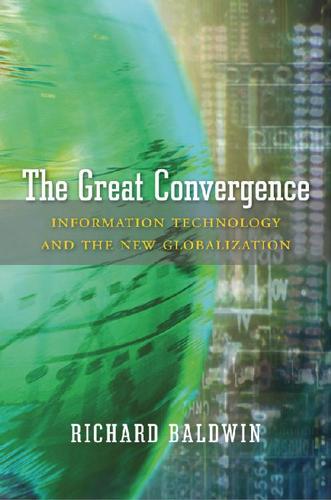
The Great Convergence: Information Technology and the New Globalization
by
Richard Baldwin
Published 14 Nov 2016
If it goes far enough, it crosses the stability boundary and, as explained in the NEG discussion, all industry clusters in one region (in the North to be concrete). The diagram, however, is not just about industrial clustering. It also has a growth takeoff in the background. At a point like 1700, the dispersion of industry conspires with the high cost of moving ideas and the result is that neither region is growing. Innovations are scarce and spillovers are difficult so the furnace of modern growth—innovation and innovation-spurring knowledge spillovers—it not yet lighted. When industry clusters, as it is at the point 1990, the furnace ignites and growth takes off in the North.
…
This unbalanced reduction of separation costs triggered a chain of causes and effects that eventually produced enormous income differences between today’s developed nations (called the “North” for short) and today’s developing nations (the “South”). First, markets expanded globally but industry clustered locally. As history would have it, industry clustered in the North. This Northern industrialization fostered Northern innovation, and since ideas were so costly to move, Northern innovations stayed in the North. The result was that modern, innovation-fueled growth took off sooner and faster in the North. In just a few decades, the resulting growth differences compounded into the colossal, North-South income asymmetries that define the planet’s economic landscape even today.
…
The details are in the next chapter, but the basic ideas are simple to explain with the diagram—starting with the diagram’s southeast box (“industrial clustering”). The clustering—that is to say, agglomeration—of industry in a nation promotes new thinking and new inventions (shown in southwest box, “Industrial innovation”). The innovation then strengthens the nation’s competitiveness in the sector (shown in northwest box, “Comparative advantage”). The next step—according to the principle of comparative advantage—is that the heightened comparative advantage leads to more exports and more production. The crank comes around full circle when this extra production generates additional industrial clustering. The basic Ricardian logic focuses on the “who exports what” question.
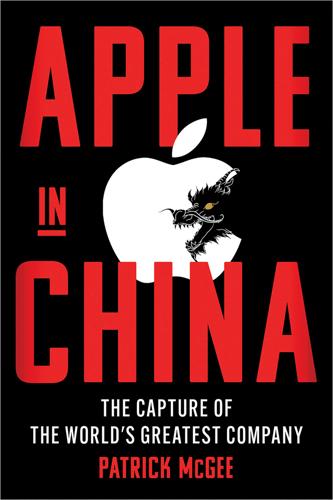
Apple in China: The Capture of the World's Greatest Company
by
Patrick McGee
Published 13 May 2025
Longer-term projects allowed it to hire thousands of laborers, then shuffle them around to wherever work was needed. To retain workers and deploy them to different lines on a whim, Gou built the Longhua campus into a dense city within a city, replete with restaurants, markets, entertainment venues, basketball courts, and subsidized dorms. This approach gave rise to a major industrial cluster north of Shenzhen, bulking up his reputation among government officials. Upon scoring political points, Gou could redeem them for better access to land, migrant labor, and cutting-edge machinery. In 1999, Foxconn won an order to build the enclosure—the external housing—for Apple’s Power Mac G4 desktop, a dazzling white-and-graphite computer featuring a semi-translucent, frosted plastic shell and integrated, curved handles.
…
Even before the computer went on sale, Apple was urging partners from Singapore to Japan to set up operations in China, taking advantage of what seemed to be limitless pools of cheap labor in fast-forming bonded zones created for exports—areas within China featuring special trade terms and tax exemptions. Quanta, the assembler of the iMac G4, established Quanta Shanghai Manufacturing City, or QSMC, in 2001, with suppliers forming around it to establish a new industrial cluster. “It’s not just that final assembly, test, and pack out needed to move into China, but the innovations in materials, fabrication, and inspection for Apple’s designs needed to be nearby as well,” Hillman says. These new local production sites allowed Apple executives to travel from, say, an injection molding, sheet metal stamping, or machining facility to an assembly site in a matter of hours, even minutes, instead of summoning a person over from another country.
…
It accounted for why the company was running circles around the competition, turning revered companies like Nokia and BlackBerry into case studies of strategic failure. But it had one major flaw. Whereas smartphone rivals like Samsung could bolt a bunch of off-the-shelf components together and make a handset, Apple’s strategy required it to become ever more wedded to the industrial clusters forming around its production. As more of that work took place in China, with no other nation developing the same skills, Apple was growing dependent on the very capabilities it had created. The upshot was startling. The open architecture of the IBM PC in 1981 was a major catalyst for the globalization of the electronics industry.
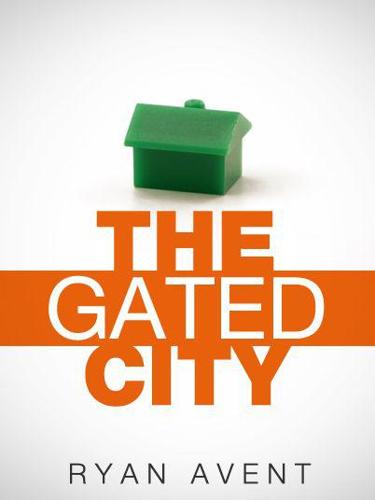
The Gated City (Kindle Single)
by
Ryan Avent
Published 30 Aug 2011
But it's not necessarily clear how all of this will happen. Cities are a crucial part of the experimental process of figuring it out. Technological communities within early industrial clusters solved critical problems and developed the techniques and ideas that powered the industrial revolution. Technological communities in later industrial clusters developed the hardware and software that brought us today’s IT. And technological communities in future industrial clusters will figure out how best to apply these and newer technologies to business models in order to earn money, raise productivity, and boost economic growth.
…
But the human-capital dependent sectors like finance and design remained and continued to drive New York’s economy. Long after the original source of New York’s success waned as an economic engine, the city remains a global economic juggernaut. New York’s port doesn’t keep the financial sector centered in Manhattan. Proximity to other financiers matters now. Industry clusters, like New York’s old textile business and its present financial sector, are one of the striking features of industrialized economies. They pop up across industries, locations, and time periods. There's Dalton, Georgia, the carpet capital. New York, financial, media, and fashion capital. There are tech concentrations in Silicon Valley, outside Boston, and in the Research Triangle of North Carolina.

Who's Your City?: How the Creative Economy Is Making Where to Live the Most Important Decision of Your Life
by
Richard Florida
Published 28 Jun 2009
The economic power and efficiency of these clusters was more than enough to offset mounting pressures to relocate abroad. By the early 1990s, the resilience of certain industrial clusters had captured the attention of leading economists and social scientists, like Harvard Business School professor Michael Porter.11 Considered one of the most important management thinkers in the world, by the mid-1990s Porter was devoting almost all of his research and resources to the study of the world’s leading industrial clusters. Porter’s research generated a new economic map of the world that took shape around clusters. According to Porter, these clusters managed to survive because of their proximity to sophisticated users and customers, their ability to draw from highly skilled pools of local talent, and their access to supportive regional institutions such as universities and vocational training programs.
…
Venture capital is another useful indicator of how high-tech industries cluster, and it’s one reason for the success of Silicon Valley. “There’s a unique set of resources in Silicon Valley that don’t exist in other places,” VideoEgg founder, Matt Sanchez, told the Wall Street Journal. “So if you’re going to build a tech company, this is the place to do it.”13 It’s not just high-tech industries that cluster. Many other industries also benefit from being located near one another. To start, let’s look at the trends in the two main sectors of the economy: the service sector and the creative sector. FIGURE 7.1 GLOBAL INDUSTRY CLUSTERS SOURCE: CLAAS VAN LINDE,"CLUSTER META-STUDY: LIST OF CLUSTERS AND BIBLIOGRAPHY."
…
Cleveland Clustering force bridging and creative class and creativity and defining economic activity and (fig.) globalization and human innovation and (fig.) occupation and personality and productivity and proximity and scientific discovery and (fig.) talent concentration from urban areas and See also Industrial clusters Colbert, Stephen Coletta, Carol Columbia University Columbus, Ohio Communities attribute clusters for family-friendly happiness with infrastructure of leadership of openness of satisfaction with Commuting Comparative advantage Consumer cities Copenhagen (fig.)

The New Geography of Jobs
by
Enrico Moretti
Published 21 May 2012
Other companies in its sector—Gap, Ralph Lauren, Old Navy—had shifted their production overseas much earlier. In this respect, the apparel sector is typical of the manufacturing sector as a whole. In the decade after World War II, textiles were a major piece of the U.S. labor market. America’s most important industrial cluster in terms of jobs was not the Detroit auto industry but the New York garment industry. As recently as the mid-1980s, more than a million American workers were still employed by U.S. companies making clothing and garments. Today that number has dropped by more than 90 percent. Take a minute to check where your clothes were made.
…
As we are about to discover, the Great Divergence is not a historical accident but the inevitable consequence of far-reaching economic forces. 4. Forces of Attraction AT FIRST GLANCE, the geographical location of America’s innovation hubs appears arbitrary and puzzling. In many traditional industries, location is tied to natural resources. The U.S. oil industry clusters in Texas, Alaska, and Louisiana because that’s where large oil reserves are. The wine industry is mostly concentrated in California because of good weather and favorable soil. The lobster industry is in Maine because lobsters don’t live in Kansas. In these cases, clustering is neither surprising nor particularly revealing.
…
The alternative approach is to try to increase the demand for labor by attracting employers. This often amounts to offering targeted incentives to innovative companies to locate in a struggling community, in the hope of forming a cluster that in the long run becomes self-sustaining. Once a successful industrial cluster is under way, it tends to strengthen over time. Its labor market and the market for specialized business services become even thicker, and its knowledge spillovers become even stronger. The difficult part, of course, is jump-starting the cluster. In 2005, Ping Wang was facing a similar problem.

Why Information Grows: The Evolution of Order, From Atoms to Economies
by
Cesar Hidalgo
Published 1 Jun 2015
Other approaches focus not on the role of individuals but on the properties of regions or of the networks of firms that locate in these regions. One strand of this literature focuses on industrial clusters associated mostly with the Harvard Business School professor Michael Porter (see, for example, Michael E. Porter, On Competition [Boston: Harvard Business School Press, 2008]). This literature, however, can also be traced back—albeit in a more rudimentary form—to Alfred Marshall’s nineteenth-century work on industrial districts (for example, Principles of Economics [London: Macmillan, 1890]). Porter discusses industrial clusters in terms of demand conditions, specific factors, strategy, and related industries.
…
This work includes the institutional literature explaining differences in the composition of industrial clusters based on differences in features of a location, in particular their social and formal institutions. (See, for example, Francis Fukuyama, Trust: The Social Virtues and the Creation of Prosperity [New York: Free Press, 1995]; AnnaLee Saxenian, Regional Advantage [Cambridge, MA: Harvard University Press, 1996]; and Daron Acemoglu and James A. Robinson, Why Nations Fail: The Origins of Power, Prosperity, and Poverty [New York: Crown Business, 2012].) For instance, an argument explaining differences between the composition and success of two industrial clusters in terms of the culture of the people located in them (religion, family orientation, etc.), or the formal rules that are in place, would fall into the categories of theories based on social or formal institutions, respectively.
…
I have taken the liberty of expanding this example substantially, since in Wiener’s book it is not mentioned in a very straightforward way and furthermore is woven into a weird Cold War political argument. Norbert Wiener, The Human Use of Human Beings: Cybernetics and Society (Boston: Houghton Mifflin, 1950). CHAPTER 6: THIS TIME, IT’S PERSONAL 1. The question of which industries locate where and why has given rise to at least four theoretical streams of literature: the literature on industrial clusters, the “new economic geography” (which is the neoclassical stream of this literature), the economic geography literature focusing on institutions and culture, and the evolutionary economic geography literature. One could argue that these different strands of literature reflect academic alliances and divisions, but I will describe them not in terms of academic divisions but in terms of how they conceptualize sources of economic advantage and the patterns of industrial diversification and specialization found in different locations.

Belt and Road: A Chinese World Order
by
Bruno Maçães
Published 1 Feb 2019
No one was that interested in those transcontinental trains, except as marketing opportunities—as the first strategy document for the initiative starkly put it, “we should cultivate the brand of China-Europe freight trains.” The measure of its early achievements were rather the industrial parks being launched and the massive ports whose construction or renovation would draw billions in investment. An interconnected system of transport, energy and digital infrastructure would gradually develop into industrial clusters and free trade zones and then an economic corridor spanning construction, logistics, energy, manufacturing, agriculture and tourism, culminating in the birth of a large Eurasian common market. Trade, not trains. Since President Xi Jinping had announced the plans a little less than two years before, everyone had set to work.
…
The equipment of leading enterprises has reached an advanced level, and key equipment such as blowing-carding machinery, combing machines, automatic winders and shuttle-less looms have a higher utilization rate than China’s national average. Thus “China can make the most of the Pakistani market in cheap raw materials to develop the textiles and garments industry and help soak up surplus labor forces in Kashgar to develop the city into an industry cluster area integrating textiles, printing and dyeing, cloth weaving and garment processing.” By 2023, Xinjiang will become the largest cotton textile industry base of China and the most important clothing export base in Western China. The largest city, Urumqi, will turn into the fashion capital of Central Asia.
…
Remarkably for a plan prepared by a Chinese government agency and a Chinese development bank, “it is suggested that Pakistan adopt the government-led mode of development.” This means that the government makes an investment in building industrial parks and attempts to integrate all government functions in some industry cluster areas, and establishes unified but relatively independent government regulatory agencies to take overall charge of all affairs concerning industrial areas and financing as well as part of the administrative functions of local governments, and introduce industrial development projects through policy support, tax preference, investment promotion and land transfer.

The Warhol Economy
by
Elizabeth Currid-Halkett
Published 15 Jan 2020
Art and culture’s role in New York’s economy lies in the city’s position as a dense hub of idea-driven, high-human-capital industries and workforce. Scholars have argued that New York’s dominance is primarily a function of its ability to cultivate a single industry cluster (finance and professional services, with the second supporting the first). Yet the city’s greatest strength is actually in being a diverse mix of strong, highly skilled occupational and industrial clusters, what Glaeser calls “skills” or what Richard Florida calls the “creative class.” The city’s concentration in high-level human capital is fundamentally what saved it from becoming one of the desolate wastelands of the manufacturing economy—as was the fate of Cleveland, Detroit, and Pittsburgh.
…
In many ways, the conversation about the needs of high-technology industrial districts or the finance industry (on which policymakers and scholars have long been fixated) and the needs of artistic communities are parallel, which fundamentally is because all of these industries so inherently depend on human capital. Creating Creative Places Economic planners and policymakers concern themselves with how to generate and retain successful industrial clusters—whether film, fashion, or semiconductors. Successful cultivation of these clusters, however, presents difficult issues. As many scholars have noted, predicting which industries, and within each industry which firms and products, will thrive is difficult—or rather, mind-bogglingly hard.13 As Annalee Saxenian put it with regard to Silicon Valley’s high-technology industries, “National policies that direct public resources toward particular technologies or sectors are seldom effective mechanisms for industrial adaptation.
…
On the other hand, the very nature of an economy driven by human capital, and the flexible way in which products and ideas are formed, requires proactive policymaking to attract the necessary factors of production (people, firms, capital). Today, natural resources alone will not guarantee success and increasingly have little impact at all in industrial development. Regions and cities have new roles in the rise of knowledge and innovation-intensive industry clusters through cultivating places and environments that are more conducive to innovation, and offer the amenity-rich and open environments that people and knowledge-intensive firms thrive in. Complicating matters, these types of economies often operate on a large, regional level. Consider that the industrial and occupational data in this book were available in such detail at the New York City Metropolitan Statistical Area (MSA), which includes far more than just New York City—in fact, the Bureau of Labor Statistics defines the MSA as a region that consists of counties that are economically linked, so New York City’s MSA concerns places like Westchester County and parts of New Jersey.
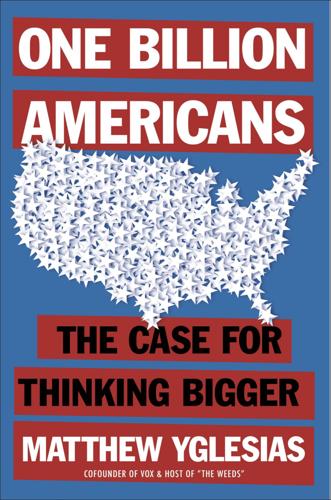
One Billion Americans: The Case for Thinking Bigger
by
Matthew Yglesias
Published 14 Sep 2020
You don’t have to live in Los Angeles to have those meetings (my father is a screenwriter who lives in New York and travels to Southern California every once in a while for meetings), but it’s more convenient if you do. But the other reason why it’s good to live in a cluster is what economists call information externalities and normal people might instead call gossip. As the great nineteenth-century economist Alfred Marshall wrote, in an industry cluster “the mysteries of the trade become no mysteries, but are as it were in the air.”* People who work in related fields at different companies talk to one another informally, and information spreads. Teenagers learn the rudiments of the dominate local business from talking to adults in their community, and even people who aren’t directly involved in the local specialty become at least broadly conversant with many of its key aspects.
…
That worked only because there are lots of journalists living in Washington, especially journalists who cover politics and policy, and there are lots of other people who live in DC who aren’t journalists but who follow political journalism closely. What’s most important, however, is that even in Washington most people don’t work in politics. Nor do most people in the Bay Area or Seattle work in technology. But these successful industry clusters are the modern-day sources of wealth rather than land or natural resources. And while most people don’t necessarily work in these industries, what they do is work providing services to other people. Consequently, in the modern world large populations make opportunity more abundant rather than spreading it thinner.
…
The effect is gender specific—girls are likely to grow up to be innovators only if their city includes an existing stockpile of female innovators (and similarly, if there are male role models for boys), underscoring the importance of role models and self-image. Particularly fascinating: The geographical aspects hold regardless of where you live as an adult. The Boston area has thriving industrial clusters in both information technology and medical devices. But Boston-area patent holders who grew up in Silicon Valley are very likely to have computer-related patents, whereas those who grew up in Minneapolis, where there’s a robust medical device industry, are likely to have medical device patents.

The Metropolitan Revolution: How Cities and Metros Are Fixing Our Broken Politics and Fragile Economy
by
Bruce Katz
and
Jennifer Bradley
Published 10 Jun 2013
The Fund asked its grantees to create a logic model (increasingly common in the not-for-profit realm) “to show organization’s system/network collaboration work at two levels: 1) the level most applicable to your organization’s mission (e.g. the formation of a bioscience/information technology/ advanced energy industry cluster); and, if applicable, 2) the level pertaining to the overall economic competitiveness of the region (e.g. across economic intermediaries and/or other government, private or public sector partners, regardless of specific economic development focus).”28 The state of Ohio also provided a nudge, because it was increasingly insisting that entities apply for grants as members of a collaboration rather than individually.
…
Still others can be found in traditional exurban science parks like Research Triangle Park in Raleigh-Durham that are scrambling to urbanize to keep pace with workers’ preference for walkable communities and firms’ preference for proximity to other firms and collaborative opportunities. Innovation districts arise in disparate geographies with different economic drivers. But all of them draw from the best innovations in both industry cluster and place-making strategies to create well-defined communities packed with resources for firms, entrepreneurs, innovators, researchers, and residents. The theory behind business clusters is that the geographical concentration of interconnected firms and supporting institutions leads to more innovation and production efficiencies, shared inputs, 06-2151-2 ch6.indd 114 5/20/13 6:53 PM THE RISE OF INNOVATION DISTRICTS 115 thicker labor markets, and collective problem solving; the theory behind walkable urbanism is that dense, mixed-use neighborhoods with cultural, recreational, and retail amenities will attract highly educated, innovative, entrepreneurial individuals and benefit the neighborhood’s existing residents.
…
GDP by 2020 in order for America to maintain its position as a global leader in innovation.33 Respected business leaders such as Felix Rohaytn have been consistent champions of a national infrastructure bank that would use public resources to leverage private sector capital for a wide range of needed investments.34 Andrew Liveris, the CEO of Dow Chemical, has called for significant investment in STEM (science, technology, engineering, and mathematics) education and improved skills-training programs at community colleges so that workers can learn the skills necessary for high-paying advanced manufacturing jobs in the United States.35 Indeed, the common thread through all the stories captured in these pages is the virtuous cycle between idea generation, the commercialization of innovation, the iterative evolution of tech-driven advanced industries, the improvement of work skills to staff these productive sectors, and the export of our competitive products and services to the rest of the world. This kind of economy does not arise in a vacuum or because of the isolated actions of exceptional entrepreneurs. As our brief history of federalism shows, smart investment in the right kinds of public goods fuels the growth of advanced industry clusters and, by extension, the rest of the economy. In many respects, the question is not what to invest in, but how. In a fiscally constrained environment, where will the resources come from? One answer is to cut to invest.36 The federal tax code is replete with provisions that subsidize excessive consumption rather than production and wasteful rather than sustainable growth.

The New Harvest: Agricultural Innovation in Africa
by
Calestous Juma
Published 27 May 2017
The existing literature suggests that there are three types of clusters in Africa: (1) the groundwork cluster, which improves the producers’ access to markets; (2) the industrializing cluster, which starts the process of specialization and differentiation; and (3) the complex cluster, which has already diversified and can begin accessing wider national and international markets.17 African clusters are in an early stage of development, meaning that most initiatives are contained within the groundwork and industrializing cluster types. The lack of complex clusters in an African context is partially due to the following structural barriers that should be addressed to further propel innovation and growth: underdeveloped regional trading networks in Africa; weak political and economic institutions; cluster occurrence in areas with an overabundance of labor, resulting in less effective labor-pooling initiatives; and premature market liberalization of large-scale industries, rendering it more difficult for small and medium-sized firms to compete with an abundance of imports.
…
More than 700 new vegetable varieties have been introduced from over 30 countries and regions. Shouguang also hosts China’s largest vegetable seed facility aimed at developing new varieties. The facility is co-sponsored by the China Agricultural University. Over the years, vegetable production has increased, leading to the emergence of an agro-industrial cluster that has helped to raise per capita income for Shouguang’s previously impoverished rural poor.20 The cluster evolved through four distinctive phases. In the first emergence phase (1978–1984), Shouguang authorities launched programs for massive vegetable planting as a priority for the local development agenda.
…
Gálvez-Nogale, Agro-Based Clusters in Developing Countries: Staying Competitive in a Globalized Economy, Agricultural Management, Marketing and Finance Occasional Paper. (Rome: UN Food and Agriculture Organization, 2010). 18. M. E. Porter, “Clusters and the New Economics of Competition,” Harvard Business Review 76, no. 6 (1998): 77–90. 19. Z. Yingming, Analysis of Industrial Clusters in China (Boca Raton, FL: CRC Press, 2010). 20. This case study draws heavily from G. Wu, T. Tu, and S. Gu, Innovation System and Transformation of the Agricultural Sector in Notes 21. 22. 23. 24. 25. 26. 27. 28. 29. 30. 285 China, with the Case of Shouguang City (paper presented to the Globelics Conference on Innovation and Development, Rio de Janeiro, November 3–6, 2003); S.
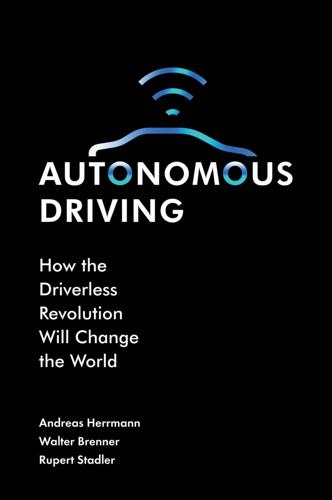
Autonomous Driving: How the Driverless Revolution Will Change the World
by
Andreas Herrmann
,
Walter Brenner
and
Rupert Stadler
Published 25 Mar 2018
Established automobile locations such as Detroit, Wolfsburg, Changchun, Solihull, Poissy or Martorell will have to create an environment beneficial to the establishment of start-ups and spin-offs. Regardless of the long and illustrious history of the automotive industry, they should quickly and consistently support the development of such digital activities without worrying about the industry’s traditions. DEVELOPING INDUSTRY CLUSTERS Autonomous mobility is basically leading to the convergence of industries (the automotive industry and the IT industry), which have so far had only loose connections. While in the United States, one of those industries has been located in Michigan and Ohio right from the start, the other became established in Silicon Valley.
…
See Conventional broadband applications Entertainment, 74, 212 Epley, Nicholas, 292 Ericsson, 130 Ethernet, 143 144 Ethics and morals for autonomous driving approaches, 250 252 avoid collisions, 249 250 conflicts, 252 254 ethics commission, 254 255 experiments, 252 Julian Nida-Rümelin statement, 253 254 level of transparency, 255 Martin Kolmar statement, 256 trolley problem, 250 Europe, projects in, 369 371 European Commission, 246 European Union, 407 Facebook, 26, 117, 227, 319 Fail operational system, 123 Fail-safe system, 123 Fallback level, 127 Faraday Future, 183 Federal Motor Vehicle Safety Standards, 234 Federal Trade Commission (FTC), 146 Fendt manufacturer, 154 433 Ferragni, Chiara (Italian fashion designer), 226 Fiat 500e, 27 Fields, Mark, 180 Fiesta model, 227 Fiesta Movement, 227 Financial incentives, 222 Finnish mobility, 371 First autonomous vehicles, categories of, 82 5G, 131 133 Automotive Association, 130 licenses, 403 networks, 132, 173, 379 Flannagan, Carol A., 303 304 Fleet(s), 349 350 management, 364 365 of robo-cars, 347 Forbes, Iain, 368 369 Ford, 6, 130, 180, 322, 332 333, 372 Ford Fiesta, 227 229 Ford Focus Electric, 27 Ford Sync system, 316 Forward collision warning, 4, 72, 193 4G networks, 65, 165, 377, 379, 403 Fraunhofer Society, 320 Frazzoli, Emilio, 112 Free time, 58 Fröhlich, Dieter, 148 Front and rear crash sensing, 78 Fuel economy, 297 299 Fuel-cell electric vehicles, 26 27 Gassmann, Oliver, 300 Geisi, 157 General Motors, 6, 40, 133 134, 136 137, 180, 281, 322, 332 333 Generation Y, 28 German Association of the Automotive Industry (VDA), 17 434 German car manufacturers, 367 368 Germany, A9 autobahn in, 134, 135 Gett app, 317 Gladbach, Peter, 148 Glaser, Erik, 198 Global positioning system (GPS), 141, 377 GPS-based satellite navigation systems, 104 navigation, 154, 263 Google, 9, 138, 173, 179, 182, 255, 327, 330, 334 338, 359 Android Auto, 285 cars, 54 mapping vehicles, 336 maps, 338 GPUs, 115 Gradual automation, 211 Grape harvest, 156 Greenwheels, 345 Gridlock, 22 Grove, Andy (Intel CEO), 222 GuideConnect system, 154 Hardware creators, 314 315 Hazard warnings, 137 HD map, 101, 105, 135 Head-up display, 279, 280, 281 Henriksson, Henrik, 161 Her (2013 movie), 291 Herbie (anthropomorphic racing beetle), 41 HERE, 137 138 live map, 101 Map Service, 101 Hiesinger, Heinrich (ThyssenKrupp CEO), 324 325 High-performance software, 281 Highly automated vehicles, 403 Highway assistant, 49 Highway chauffeur, 49 Index Highway pilot, 49 Hilly landscape of Istanbul, 385 Hockenheim racetrack, 227, 229 Honda Fit EV, 27 Hongqi HQ3, 379 Huang, Jen-Hsun (CEO of Nvidia), 6 Huawei, 130, 131, 372 Human dignity, 251, 253 Human driving, 21 facts about, 21, 23 traffic problems, 22 See also Autonomous driving Human senses, 279 Human voice, 292 Human-like speech, 292 Humanising driving, 102 technology, 292 293 Human machine interaction, 233, 277, 282, 288, 332 333 causes and consequences of driver distraction, 278 head-up display, 280 mechanics, 277 283 take-over request, 285 287 technology, 332 trust, 287 293 user interfaces, 283 285 vision and example of augmented-reality application, 279 280 Hyundai, 180, 372 IBM, 31 IBM Global Parking Survey, 191 192 IBM OS/2, 247 IEEE, 243 Image processing, 124 Imperative programming, 99 In-vehicle algorithms, 298 Individualised displays, 316 Index Industrial policy, 405 Industrialization process, 378 Industry clusters development, 405 406 Infinity Q50, 123 Influencers, 223 225 Information to passengers and to environment, 108 technology, 261 Infotainment devices, 142, 284, 285 Instant torque, 26 Insurance, 369 companies, 356 357, 358 Insurance industry business model, 353 355 liability, 355 356 new products, new services, 356 359 Intel, 35, 42, 125, 130 Intelligent connected vehicle, 261 262 Intelligent infrastructures, 299 301 International norm committees, 243 International Transport Forum of OECD, 349 Internet, 336 in cars, 136 connectivity, 320 giants, 138, 359 industry, 338 services, 19 iPhone, 7, 398 ISO 11270 Norm for LaneKeeping Assistance System, 244 ISO committees, 243 Israel, projects in, 374 375 Jaguar, 42, 130 Jaybridge Robotics, 181 Junge, Lutz, 115 435 K-City, 7 construction, 7 self-driving car test facility, 373 Keecker Robot, 291 Keller, David, 39 Kia, 6, 7 Kia Soul EV, 27 Kinze manufacturer, 154 Klout, 227 Knight Rider TV series, 41 Kodak, 111, 312 Kolmar, Martin, 256 Kolodge, Kristin, 289 Kred company, 227 Kremling, Hartmut, 131 Land Rover, 42, 130 Land use, 304 Landmarks, 93, 103 Lane localisation, 103 Lane modelling, 103 Lane-departure warnings, 72, 78 Lane-keeping assistance systems (LKAS), 244 Lantz, Brett, 99 100 Last-mile delivery, 168 Launching ride-and car-sharing services, 317 Le Super Electric Ecosystem (LeSee), 183 LeEco, 16, 183 Legal entities, 235 Legal framework, 57, 79, 246, 335, 378, 401 402 Legislation, 11, 172, 367, 401 Leisure time, 34, 212, 322 LeSee.
…
See Radio detection and ranging technology (Radar technology) Index Radio detection and ranging technology (Radar technology), 95, 126 Railways companies, 174 177 development, 32 network, 386 Rand Corporation, 6, 191 Real-time traffic, 137, 262 Real-world model, 92, 99, 105 106 of autonomous driving, 92 computer-driven driving, 108 data from passengers, 94 95 information to passengers and to environment, 108 lane-level and intersection mapping based on lidar, 105 lidar print cloud of blackfriars bridge, 104 mapping and localising, 101 104 planning and monitoring, 106 108 sensing and detecting, 95 100 sensors for vehicle dynamics information, 97 sensors in autonomous vehicles, 95 simulation, 91 92 un-fused sensor data of static and dynamic objects, 106 Redundant steering systems, 124 Reich, Andreas, 135, 136 Reinforcement learning, 114 Relaxation, 80, 212, 218 Reliability of electronic brake systems, 122 Remote vehicle monitoring, 261 Responsibility with increasing automation, 235 Ride-sharing, 22, 184, 206, 302 companies, 404 models, 343 services, 344, 384, 397 439 RIO platform, 167 Road(s), 103 experience management, 94 networks in Chinese megacities, 382 road-safety legislation, 192 and telecommunication networks, 379 traffic, 195 users, 108 Roadmap assistance systems, 71 77 categories of first autonomous vehicles, 82 development phases, 77 81 estimated revenues by product package, 77 expected worldwide sales of cars, 85 sales forecasts, 84 86 types of vehicles, 81 84 Roadside objects, 103, 107 Roadster, 27 Robo-cars, 12, 18, 19, 83, 298, 346 349, 347, 406 autonomous, 13 from Google, 335 336 Robots, 10, 58, 238 Roland Berger & Partners, 320 Rosa, Hartmut, 217 SAE J3016 document, 244 Safety, 192 193, 295, 302 304 autonomous vehicles enabling use of alternative fuels, 305 fuel economy, 297 299 functions, 74, 78 intelligent infrastructures, 299 301 land use, 304 operating costs, 301 302 relationship between road speed and road throughput, 296 vehicle throughput, 295 297 440 Sales forecasts, 84 86 Samuelsson, Hakan, 174 San Francisco Park, 301 Savarese, Domenico, 354 Savings effects from autonomous cars, 67 68 from autonomous trucks, 68 69 Scania truck, 162, 261 Schaeffler, 9 Science fiction, 3, 39 41 Scientists, 177 Security and Privacy in Your Car Act of 2017 (SPY Car Act of 2017), 145 Segway scooter, 221 Self-determination, 147, 148, 205 Self-driving cars, 22, 24, 25, 39, 61, 203, 223, 224, 233, 244, 261, 295, 299, 304, 337, 346, 395 features, 222 fleet of vehicles, 171 172, 349 grain trailer, 263 prototypes, 198, 377 taxis, 337, 345, 374 tractors, 8, 154, 155, 156 trucks, 66, 69, 70, 164, 165 vehicles, 153, 171, 175, 222, 225, 233, 354, 368, 379, 388 Self-learning system, 55, 238 Self-parking, 74, 288, 387 Sensing, 93 and detecting, 95 100 front crash-sensing system, 78 Sensor(s), 261, 374 375 applications, 132 in autonomous vehicles, 95 data, 165 for vehicle dynamics information, 97 Sensory perception, 279 Service creators, 316 319 Index Service-oriented business model, 397 398 Sharing economy fleets, 349 350 peer-to-peer service, 350 351 robo-cars, 346 349 sharing, pooling, 342 345 trend, 341 342 Shashua, Amnon, 93 Shenzhen, 386 389 Shneiderman’s eight golden rules of interface design, 283 Shoeibi, Houchan (President, Saint-Gobain Sekurit), 271 Shuttle service, 14, 383 Simulation, 91 92, 121, 345, 350 Singapore Autonomous Vehicle Initiative, 372 373 Smart-city challenges, 383 features, 406 Smartphone, 79, 216, 222, 317, 402, 407 app, 6, 28, 358, 374 industry, 127 signals, 136 unrestricted spread, 255 Social acceptance, 402 Social discourse, 402 Social exchange, 344 Social interaction communication, 198 200 cultural differences, 195 197 mobility as, 195 pedestrians in traffic in London, 196 pedestrians in traffic in Teheran, 197 Social networks, 7, 225, 227, 341 Society of Automotive Engineers (SAE), 47, 144, 243 245 Software, 93, 111, 117 121 creators, 315 316 errors, 249 testing, 120 Index Somerville, 386 389 Spotify, 141, 316, 319 Stahl, Florian, 113 115 Stakeholders car dealers, repair shops and insurance companies, 173 174 public opinion, politics, authorities and cities, 171 173 railway companies and mobility platforms, 174 177 scientists, 177 technology and telecommunication companies, 173 train station as transportation hub, 176 Standards, 241 characterisation, 242 243 development of technology, 241 242 dominant design, 247 248 State Farm Insurance, 316 State Route 91 in Southern California, 296 Statham, Jason (British actor), 226 Status-conscious customers, 204 Steer-by-wire, 122 solutions, 324 system, 123 Steering, 76, 91, 96, 108, 122 manoeuvre, 253, 286 redundant steering systems, 124 systems, 324 ThyssenKrupp, 123 wheel, 15, 43, 72, 76, 123, 238, 285 Stop-and-go traffic, 58, 206, 218, 295, 299 Suburbs, 317, 404 Supervised learning, 113 114 441 Suppliers, 17, 35, 41, 70, 77, 125, 171, 181 182, 243, 284, 312, 323, 333, 398, 405 Swedish car manufacturer, 355 Swiss Railway Corporation, 174 176 Systematic connectivity, 403 Tactile signals, 72, 108 Take-over request, 285 287 TaxiBots fleet, 350 Technical standards, 247, 371 Technological functions, 247 Technology, 173 companies, 55, 182 183 fusion, 330 334 partnerships, 318 Teheran, pedestrians in traffic in, 197 Telecommunication companies, 173 statement by telecommunications experts, 132 Telematics data, 356 devices, 142 services, 142 Ten-point plan for governments, 401 autonomous mobility establishment as industry of future, 404 405 autonomous vehicles integration in cities, 406 industry clusters development, 405 406 initiating social discourse, 402 investing in communication infrastructure, 403 404 investing in transport infrastructure, 402 403 linking public and private transport, 404 442 promoting research, development and education, 406 407 promoting tests with autonomous vehicles, 407 setting legal framework, 401 402 Terror (film), 252 Tesla, 5, 27, 53, 125, 179, 203 204 Texas A & M University, 69 Texas Institute for Urban Mobility, 68 Thune, John, 146 ThyssenKrupp Steering, 123, 324 325 Time, 187 192, 295, 302 304 autonomous vehicles enabling use of alternative fuels, 305 fuel economy, 297 299 intelligent infrastructures, 299 301 land use, 304 management, 215 218 operating costs, 301 302 relationship between road speed and road throughput, 296 vehicle throughput, 295 297 Time-critical, reliable applications, 132 Touareg, Volkswagen, 41 Toyota, 6, 181, 332 333 research into artificial intelligence and self-driving cars, 183 Toyota RAV4 EV, 27 Tractor’s steering system, 154 Traditional automobile companies, 53 Traditional automotive suppliers, 9, 125 Traffic, 389 and art, 389 390 flows control, 248 Index infrastructure, 58, 247 248, 377, 383, 386 laws, 148, 249 regulations, 44, 107, 195, 255, 373 situation, 6, 10, 21, 55, 65, 80, 93, 102, 160, 187, 206, 251, 316, 336, 365, 386 in United States, Canada, and Northern and Central Europe, 195 Traffic jams, 21, 63, 68, 189, 247, 286, 365, 388 assistants, 10, 53, 113 in daily commuter traffic, 365 time lost in, 187 Transparency, 147, 148, 167, 255 Transport cost, 166, 346, 347 Transport infrastructure, investing in, 402 403 Transportation system, 8, 158, 324, 384 385 Trendsetters, 225 Trojans, 142 Trolley problem, 250 Truck(s), 66, 160 of de Winter Logistics transport, 167 explanation of savings effects from autonomous, 68 69 potential savings from selfdriving cars and, 66 Trust, 287 293 TRW, 9 Twitter, 26, 141, 226, 227 Type-approval authorities, 172 law, 234 Uber, 174, 184, 311, 317, 343, 358 UK automotive industry, 368 Ultrasonic sensors, 126, 333 Un-fused sensor data of static and dynamic objects, 106 Index Unbox Therapy, 226 Underused assets, 341, 351 UNECE vehicle regulations, 234 Uniform legal framework, 246 Union Square in Somerville, 387 388 United Nations General Assembly, 192 United States, 63, 67, 367, 402 current fuel economy for cars, 59 implications of congestion in, 188 legal situation in, 234 235 Luxe start-up in, 319 projects in, 369 371 roads in, 86 traffic in, 195 University of Michigan Transportation Research Institute, 120 Urban Challenge, 42 Urban development Audi urban future initiative, 384 386 megacities, 381 383 Shenzhen, 386 389 smart-city challenges, 383 Somerville, 386 389 traffic and art, 389 390 “Urban Parangolé” project, 384 385 Urban traffic, 17, 54, 79, 120, 168, 183, 384 Urbanisation, 26, 29, 341, 381, 382 US Department for Energy, 69 US Department of Transportation, 69, 298, 355, 383 US Environmental Protection Agency, 191 US Federal Highway Administration, 296 US National Highway Traffic Safety Administration (NHTSA), 145 146, 370 443 US Tech Choice study, 288 Use cases for autonomous driving driving to hub, 213 scenarios, 211 215 time management, 215 218 User groups, 66 User interfaces, 283 285 Utilitarian approach, 250 251, 257 V-to-business application, 399 V-to-dealer communication, 25 V-to-everything communication, 375 V-to-home application, 399 services, 318 V-to-life applications, 318 Valeo, 182 Value chains Baidu, 338 conditions, 328, 330, 331 economics, 328, 329 Google, 334 338 redesign, 327 328 technology fusion, 330 334 Vehicle automation, 401 connectivity, 143 digitising and design, 265 267 management, 74 manufacturers, 313 platooning, 299 surroundings, 284 throughput, 295 297 types, 81 84 Vehicle as ecosystem, 263 264 degree of autonomy, 262 263 intelligent connected vehicle, 261 262 tractor to ecosystem, 262 Vehicle detection in autonomous vehicles, 95 challenges, 98, 100, 103 104 lidar, 95, 96 444 machine-learning algorithms, 96, 98 Radar, 95 for vehicle dynamics information, 97 Vehicle sketches and drafts, 267 Audi designers’ drafts of short-distance vehicles, 269 270 Audi designers’ sketches of long-distance vehicles, 268 Budii car concept, 272 273 driverless cars, 267 269 interview with Houchan Shoeibi, 271 272 Nissan Teatro for Dayz, 273 274 Volkswagen Sedric, 274 275 Vehicle-to-cloud communication (V-to-C communication), 129 Vehicle-to-infrastructure communication (V-to-I communication), 25, 74, 129, 134 135, 143, 182, 241, 243, 246, 247, 332, 369, 371, 377, 397, 399 Vehicle-to-pedestrian communication, 136 Vehicle-to-vehicle communication (V-to-V communication), 10, 25, 74, 129, 133 134, 182, 241, 243, 246, 247, 295, 298, 332, 369, 371, 375, 377, 397, 399, 403 Vehicle-to-vehicle connectivity, 143 Vehicle-to-X (V-to-X), 25, 135 136, 241, 369 370 applications, 101, 147 communication, 272 Version control, 120 Video cameras, 227, 333 Vienna Convention (1968), 11, 172, 234, 246, 254, 401 Index Virginia Tech Transportation Institute, 278 Viruses, 142 Visions, 57 energy, 59 60 lives, 57 58 objections, 61 63 people, 60 people doing in autonomous cars, 62 preconditions, 60 61 space, 58 59 time, 58 VisLab research vehicle, 42 Visteon, 284 Visual signals, 78, 247 Visualisations of mobility hubs for Boston and Washington, 385 Volkswagen, 6, 130, 317, 332 333 e-Golf, 27 group, 198 Sedric, 274 275 Volvo Car Corporation, 45, 117, 174, 181, 316, 322 von Pentz, Markwart, 155 Vulnerability of connected vehicles, 142 Warehouse transportation, 159 Waterfall approach, 330 Waze, real-time traffic mapping app, 374 375 Wickenheiser, Othmar (Professor of Design), 266 Wilson, Joe, 145 Wissmann, Matthias, 17 18 WLAN, 154 Work and welfare Jose Castillo statement, 364 365 prisoners of city, 366 traffic jams, 365 Index World Health Organization, 191, 354, 378 WWired article, 142 YouTube, 53, 227, 319, 323 YouTubers, 226 Yueting, Jia, 183 445 Zetsche, Dieter, 290 zFAS central processing unit, 118, 124, 125 zForce steering wheel, 285 Zimmer, John, 180 Zipcar, 344 Zurich Insurance Group, 354
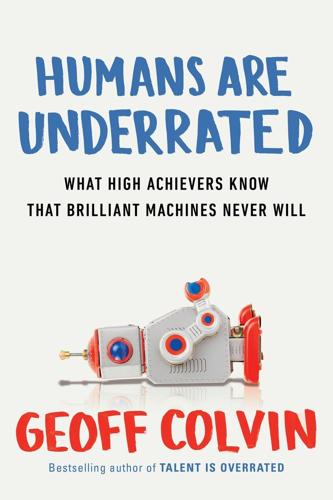
Humans Are Underrated: What High Achievers Know That Brilliant Machines Never Will
by
Geoff Colvin
Published 3 Aug 2015
Or you might suppose that near-universal global connectivity would make physical proximity irrelevant, but as these researchers observe, “metropolitan Tokyo has roughly the same population as Siberia,” and while Siberians have the Internet and mobile phones, we don’t see a lot of innovation originating there. Research on industry clusters reinforces the point. Companies in the same industry—especially industries that rely most heavily on creativity and innovation—often locate in the same area. Besides Silicon Valley, famous examples include high-tech clusters in Research Triangle, North Carolina, and Austin, Texas. Everyone in those industries agrees that an important reason for locating in clusters is to make exchanging ideas easier.
…
B. , 119–20 Hopper, Grace, 183 Howe, Robert, 24 Howze, Hamilton Hawkins, 100–101 Hughes, Chris, 51 humanities, 208–9 humans, 53 blank-slate view of, 38–39, 181 creativity in, 165–67, 175–77 as in charge, 42, 126 mechanical imitation of, 42, 80 and people-only work, 43–44 social interactions of, see social interactions and relationships universal qualities of, 39–40, 145 Humphrey, N. K., 38 IBM, 31, 211 Deep Blue, 30, 40 Watson, 1–3, 9–10, 18, 19, 161–63, 166 Industrial Revolution, 4, 10, 11, 53, 212 industry clusters, 173–74 Infor, 72 information technology, 6, 16–18, 48, 49, 53, 54, 72, 121, 184, 199–203 innovation, see creativity and innovation Intel, 5, 45 Intelligence Science Board, 134 Internet, 52, 62, 167, 171, 173 IQ, 123 of teams, 122–25, 178–80, 188–89 Iraq, 50–51, 113, 200–201 Battle of 73 Easting in, 107–11, 112 combat robots in, 23 Operation Desert Storm in, 107, 108 iRobot, 24, 41 irrational behavior, 25, 48–49, 132–35, 137, 140, 155 Isaacson, Walter, 131, 132 Jennings, Jean, 183 Jeopardy!

The Power Law: Venture Capital and the Making of the New Future
by
Sebastian Mallaby
Published 1 Feb 2022
Ideas spread like wildfire around Silicon Valley because of places like Walker’s Wagon Wheel, a packed watering hole where the engineers from IBM and Xerox PARC traded gossip freely. In other industrial clusters, the same ideas might not have spread at all, because the social relationships were not wired for fast dissemination.[7] Of course, Saxenian’s thesis raises a question: If porous boundaries and an abundance of weak ties make for a productive industrial cluster, what created these conditions in the Valley? There are two familiar answers. First, California law prevents employers from tying up employees in non-compete agreements; talent is free to go where it pleases, unlike in most states, including Massachusetts.
…
But when it comes to commercializing applied science, the Valley’s culture of “coopetition” has proved more creative than the self-contained, vertically integrated corporations of Boston or Japan. Large companies bottle up ideas and often waste them. Shifting coalitions of small ones conduct myriad experiments until they find the best path forward. Why did it take a sociologist to spot Silicon Valley’s advantage? Economists have always acknowledged the vitality of industrial “clusters”—finance in New York, movies in Hollywood, tech in Silicon Valley. They observe that clusters develop deep labor markets in specialized fields, so a company needing experts in, say, a particular kind of database software can hire the precise skills that it is seeking.[4] But Saxenian was going beyond economists’ focus on productive matching between workers and employers.
…
In the United States, the Bayh-Dole Act of 1980 allows universities to patent inventions made with the help of federal research grants and to license these patents to startups. As a result, many American universities have established sophisticated technology transfer offices that connect inventors to venture capitalists. Just as industrial clusters depend on rapid circulation of capital and people, so intellectual property must be freed to seek its most productive uses. The last broad policy lesson is that governments should think globally. They must compete to attract foreign scientists and entrepreneurs by handing out visas liberally.

Connectography: Mapping the Future of Global Civilization
by
Parag Khanna
Published 18 Apr 2016
A country cannot change where it is, but connectivity offers an alternative to the destiny of geography. Supply chains are thus a form of salvation for the bottom billions in developing countries, whose governments now bend over backward to attract them. To that end, the rise of special economic zones—districts or cities designed to attract investment into specific industry clusters—is the single most significant innovation in how dozens of countries are run since the creation of modern states. SEZs are both local anchors and global nodes. It is yet another sign of the shift from a political to a supply chain world that cities are increasingly named not after people or scenery—think Jefferson or Ocean View—but instead for what role they play in the global economy: Dubai Internet City, Bangladesh Export Processing Zones Authority, Cayman Enterprise City, Guangzhou Knowledge City, Malaysian Multimedia Super Corridor, and about four thousand more.
…
But while there is much to be adapted from neighborhoods that promote pedestrian civic life, many cities must urgently catch up to the present (and future) before they can become reflections of the past. CHINA’S SUPERSIZE SEZS No country has as many SEZs, new cities, and megacities as China. While SEZs have powered China’s export sector and growth, many were designed as single-industry clusters that proved vulnerable to global economic fluctuations—remember Dongguan, China’s Detroit. Just two coastal clusters of provinces centered on Shanghai in the east and Guangdong in the south have less than a quarter of China’s population but have been responsible for 80 percent of its exports.
…
Socially responsible investment funds actively screen a combined $4 trillion portfolio, looking beyond parent companies deep into their tens of thousands of suppliers to measure compliance with environmental standards. The Dutch fund manager RobecoSAM has co-developed a suite of Dow Jones Sustainability Indices covering two dozen industry clusters and issuing detailed reports on the practices of corporate leaders and their exposure to energy supply disruptions. Global reinsurance giants such as Swiss Re and Zurich Insurance insist that clients build sustainability into their supply chains or risk having their policies canceled. These are the pillars of an emergent “regulatory capitalism” that mixes government sanction and financial pressure to raise supply chain standards.

The New Urban Crisis: How Our Cities Are Increasing Inequality, Deepening Segregation, and Failing the Middle Class?and What We Can Do About It
by
Richard Florida
Published 9 May 2016
The nineteenth-century economist Alfred Marshall identified the gains that occur when competing firms agglomerate. Paul Krugman won his Nobel Prize in part for his insights into the ways that clusters of firms shape our economic geography and power economic growth. Big, populous cities develop thriving industry clusters, such as finance in New York and London, motion pictures in LA, fashion in Milan and Paris, and technology in San Jose. But second, and perhaps even more importantly, skilled and ambitious people cluster in cities. Jane Jacobs originally showed how the clustering of diverse groups of people and skills power urban economies.
…
population lost by, 30 as Sunbelt city, 192 Hoyt, Homer, 127–128 Hulchanski, David, 133 human capital, 21, 103, 208 immigrants, 21, 212 inclusionary zoning, 201–202 income basic minimum, 202, 208–210 housing costs as share of, 199, 221 inequality, 49, 82–87, 90–94, 112, 114, 116, 218 per capita, 220 raising, 202 redistribution, 209 segregation, 100–103, 100 (table), 101 (table), 102 (table), 111, 219 tax, negative, 202, 209–210 India, 41, 44 (table), 45, 170, 173 industry clustering of, 21, 33 deindustrialization and, xii, 5 globalization of, 18 See also high-tech industry inequality. See economic inequality infrastructure connectivity and, 181–183 investment in, 11, 28, 65, 183, 185, 189–190, 195–199, 212 politics and, 195 innovation, 15, 17, 45–46, 186, 193 economic growth and, 8, 10, 25–26, 55, 155, 166, 191, 200, 205, 215 economic inequality and, 49–50, 93 higher-paying service jobs promoting, 206 Integration Segment on Sustainable Urbanization, 167–168 investment gentrification shaped by, 65–67, 72 infrastructure, 11, 28, 65, 183, 185, 189–190, 195–199, 212 in parks and green spaces, 66 people-based, 11, 207–210 place-based, 11, 207–210 poverty tackled by, 11, 207–210 in schools, 66, 207–208 in transit, 28, 190, 196–201, 214 See also venture capital investment Istanbul, 41 Jackson, Kenneth, 190 Jacobs, Jane, 21, 178, 193 Jefferson, Thomas, 190 job growth, suburban crisis and, 160–161 journalism jobs, location of, 68–69 Kaine, Tim, 185 Kalen, Rob, 46 Kenney, Martin, 43 Khrushchev, Nikita, 151 knowledge hubs, 50, 123–124, 142, 157, 171 defined, 6 future of, 215 gentrification of, 56, 68 inequality in, 82, 85, 87–88, 109, 112 renters in, 200 knowledge-based economy, xv See also urbanized knowledge capitalism Kolko, Jed, 62 Krugman, Paul, 21, 189 LA.

The Technology Trap: Capital, Labor, and Power in the Age of Automation
by
Carl Benedikt Frey
Published 17 Jun 2019
Rebitzer, 2006, “Job-Hopping in Silicon Valley: Some Evidence Concerning the Microfoundations of a High-Technology Cluster,” Review of Economics and Statistics 88 (3): 472–81. 46. R. J. Gilson, 1999, “The Legal Infrastructure of High Technology Industrial Districts: Silicon Valley, Route 128, and Covenants Not to Compete,” New York University Law Review 74 (August): 575. 47. S. Klepper, 2010, “The Origin and Growth of Industry Clusters: The Making of Silicon Valley and Detroit,” Journal of Urban Economics 67 (1): 15–32. 48. T. Berger and C. B. Frey, 2017b, “Regional Technological Dynamism and Noncompete Clauses: Evidence from a Natural Experiment,” Journal of Regional Science 57 (4): 655–68. 49. E. Moretti, 2012, The New Geography of Jobs (Boston: Houghton Mifflin Harcourt), 158–65. 50.
…
Cambridge: Cambridge University Press. Kleiner, M. M. 2011. “Occupational Licensing: Protecting the Public Interest or Protectionism?” Policy Paper 2011-009, Upjohn Institute, Kalamazoo, MI. Klemm, F. 1964. A History of Western Technology. Cambridge, MA: MIT Press. Klepper, S. 2010. “The Origin and Growth of Industry Clusters: The Making of Silicon Valley and Detroit.” Journal of Urban Economics 67 (1): 15–32. Kline, P., and E. Moretti. 2013. “Local Economic Development, Agglomeration Economies, and the Big Push: 100 Years of Evidence from the Tennessee Valley Authority.” Quarterly Journal of Economics 129 (1): 275–331.
…
See also Industrial Revolution Bronx, 182 Bronx-Whitestone Bridge, 167 Bronze Age, 35 Brown, Sherrod, 291 Brynjolfsson, Erik, 303, 326, 329, 339 bubonic plague (1348) (Black Death), 67, 75 Bureau of Labor Statistics (BLS), 191 Bush, George W., 357 Bythell, Duncan, 121 California Civil Code of 1872, 359 Čapek, Karel, 74 capitalism: perceived threat to, 210; beginnings of, 70; criticism of, 342; impact of clocks on evolution of, 47; rise of, 218; Jeffersonian ideal under, 212; normal state of, 210 capitalist achievement, 294 Capitoline Hill, 40 Captain Swing riots, 130, 285 caravel construction, 50–51 Cardwell, Donald, 47, 59, 97 Carlyle, Thomas, 117 Carnegie, Andrew, 208 Cartwright, Edmund, 105, 127 Case, Anne, 255–56 Cave, Edward, 102 Celestine III, Pope, 44 cement masonry, discovery of, 37 Chadwick, Edwin, 114–15 Charles I of England, King, 54–55, 82, 86 Chartism, 137 cheap labor, slower mechanization and, 75 Cherlin, Andrew, 276, 279 Chetty, Raj, 253, 361 child labor, 103, 123, 134; as opportunity cost to education, 214; robots of Industrial Revolution, 8–9 chimney aristocracy, 89 China: admission to World Trade Organization, 281, 286; ascent of, 289; delayed industrialization in, 88; trade war with, 331 Christensen, Clayton, 354 Chrysler Building, 182 civil rights: lagging, 20; legislation, 280 Civil War (American), 75 Civil War (English), 81 Clark, Gregory, 29, 48, 60 classical civilizations, 37 clientelism, 271 Clinton, Hillary, 285 clocks, 47 Coalbrookdale Iron Company, 108 cognitive divide, 238–43 Colbert, Jean-Baptiste, 84 collective action problem, 19–20 collective bargaining, 192 college-educated citizens: activities of, 352; detachment of, 256; among Great Divergence, 258, 358; hours per day worked, 338; perceived untrustworthiness of, 278; promotion of, 350; qualified as middle class, 239 Colt, Samuel, 149–50 Columbus, Christopher, 51, 67 Communist Manifesto, 7, 63, 70, 119 competition: among nation-states, 19, 57, 89; cascading, 289 computer-aided design software, 13 computer-controlled machines, jobs eliminated by, 228 computer publishing, 247 computers: age of, 228–38; analysts in, 235; automation anxiety concerning, 183; jobs created in, 16; ranks of the affluent in, 224; revolution, 249; those who thrived in, 16; trend beginning with, 258 connectivity, 362–63 consumer products: cheapening of, 294; new, Americans’ growing appetite for, 203 containerization, 171–72 Corbyn, Jeremy, 281 Corn Laws, 267 corporate giants, 208 corporate paternalism, 200 corporate profits, 132, 244 cotton cloth guild, 88 cotton industry, 100 cotton production, mechanization of, 7 Cowie, Jefferson, 200 craft guilds, 55–57, 87 Crafts, Nicholas, 107, 329 crime, joblessness and, 253 Crimean War, 150 Crompton, Samuel, 94, 102 Crouzet, François, 70 Crystal Palace Exhibition of 1851, 147, 149 cultural phenomenon, working class as, 278 culture of growth, 77 Dactyl, 313 Da Gama, Vasco, 51, 67 Dahl, Robert, 273, 352 Daimler, Gottlieb, 166 Darby, Abraham, 108 Dark Ages, light in, 41–51 data, as the new oil, 304 David, Paul, 153, 326 Davis, James J., 175 “deaths of despair,” 256 Deaton, Angus, 8, 255 Declaration of Rights of 1689 (Bill of Rights), 79 Decree Tractor Company, 215 Deep Blue, 303 deep learning, 304 Deep Mind, 301 Defense Advanced Research Projects Agency (DARPA), 307 Defoe, Daniel, 68–69, 71, 84 democracy: legitimacy of, undermining of, 274; liberal, components of, 267; middle class and, 265–69; rise of, 265 Descartes, René, 94 Detroit, Michigan, 151, 257, 359 Devine, Warren, Jr., 153 Diamond, Jared, 64 Dickens, Charles, 117 digital communication, 360 digital industries, clustering of, 260 Diocletian, Roman Emperor, 65 disappearance of jobs, 250–52 “disciplined self” identity, 279 Disraeli, Benjamin, 112, 268 Dittmar, Jeremiah, 48 Domesday Book of 1086, 44 domestic system of production, 61, 71; downfall of, 8 Douglas, Paul H., 178–79 Drebbel, Cornelis, 52 drones, 342 Drucker, Peter F., 227 drudgery, end of, 193–98 Dust Bowl (1930s), 193, 204 Dutch Revolt, 81 Earned Income Tax Credit (EITC), 357 earnings gap, 230 economic incentive, lack of, 40 economic inequality, 22, 274, 277 economic parasites, 79 economic segregation, 356 economies of scale, factories taking advantage of, 110 Eden, Frederick, 116, 344 Edison, Thomas, 2, 52, 148, 189 education and technology, race between, 216 Eilmer of Malmesbury, 78 Eisenhower, Dwight, 307 electricity, early days of, 151 electrification, rural, 157 Electronic Numerical Integrator and Calculator (ENIAC), 230 elevator: arrival of, 14; automatic, 182 Elevator Industry Association, 182 elevator operators, vanishing of, 181, 227 Elizabeth I of England, Queen, 10, 54, 105 Empire State Building, 182 enabling technologies, 13, 227, 228 Engels, Friedrich, 70, 112, 249, 364 Engels’ pause, 131–37, 219; ending of, 287; polarization and, 266; return of, 243–48, 331; time of, 337 English craft guilds, fading power of, 87 entrepreneurial risk, 77 Facebook, 285 factory system, 8, 97, 126; annus mirabilis of 1769, 97; artisans, 98; child labor, 103, 104; coke smelting, 109; control over factory workforce, 104; cotton industry, 100; domestic industry, output growth in, 98; earlier modes of production, 97–98; economies of scale, factories taking advantage of, 110; electrification, 190, 195; Industrial Revolution, 97, 100–101; international trade, rise of, 99; inventions, 102; iron, railroads, and steam, 105–11; mechanical clock as enabling technology for, 47; railroad, arrival of, 108; rise of machines, 99–105; silk industry, beginnings of, 99; social savings of steam engine, 107; steam engine, economic virtuosity of, 107; working class, 98 Fairchild Semiconductor, 359 Fair Labor Standards Act of 1938, 200 farming: disappearance of jobs, 197, 203; mechanization of, 324; revolution, 168–69 feudal oligarchies, replacement of, 58 feudal order: political participation in, 265; rise of, 41, 62 Field, Alexander, 163, 170 Finley, Moses, 36 First Opium War, 88 Fisher, Alva J., 27 Fisher, Irving, 210 Ford, Henry, 141, 148, 167, 195, 365 Ford assembly lines, 18, 365 Ford Motor Company, 148, 199, 240 France, industrial development in, 84 Francis I, Holy Roman Emperor, 85 French Revolution, 90 Friedman, Milton, 355 Friedman, Thomas, 257 Fukuyama, Francis, 141, 264–65, 273, 343 Furman, Jason, 322 Galileo, 39, 52, 54, 94 Galor, Oded, 133 Gans, Joshua, 308 Garden of Eden, 191 Gaskell, Elizabeth, 117 Gaskell, Peter, 117–119, 135, 229, 249 Gates, Bill, 10 Gates paradox, 10, 11, 21 General Electric, 155, 157, 215, 289 General Motors assembly lines, 18 geography of new jobs, 256–63 George Washington Bridge, 167 Giffen, Robert, 132–33 gig mill, 10, 76, 86, 128 Gilded Age, 208 Gille, Bertrand, 39–40 Gini coefficient, 209, 245 Gladstone, William Ewart, 133 Glaeser, Edward, 257, 261, 263 globalization: automation, and populism, 277–85; backlash against, 365; clamping down on, 290; costs of, 366; facilitator of, 282; first wave of, 171; losers to, 21, 26; vanishing jobs and, 11 Glorious Revolution of 1688–89, 79, 82–83, 86 Golden Gate, 167 golden postwar years, 239 Goldfarb, Avi, 308 Goldin, Claudia, 213, 349 Goldin, Ian, 357 Gompers, Samuel, 279 Goodyear Tire, 199 Google, 305 Google Translate, 304 Goolsbee, Austan, 340 Gordon, Robert, 198, 202, 220, 272, 342 government regulations, 49, 137 Great Depression, 13, 143, 170, 211, 272 Great Divergence, 24; absence of economic revolution, 95; beginnings of industrialization, 94; factory system, evolution of (see factory system); Industrial Revolution (see Industrial Revolution); per capita income growth, 94; rise of the machines, 93; textile industry, Industrial Revolution begun in, 95 Great Escape, 8 “great exception” in American political history, 200 Great Migration, 205 Great Recession, 244, 284, 339, 343 Green, William, 174 Greif, Avner, 88, 92, 344 growth, culture of, 77 Gutenberg, Johannes, 47 Habsburg Empire, 85 Hammer, Michael, 326 Hansen, Alvin, 179, 342 Hargreaves, James, 102–3 Harlem, 1 Harper, Kyle, 37 Hawking, Stephen, 36 hazardous jobs, end of, 195, 198 health conditions, during Industrial Revolution, 114–15 Heaton, Herbert, 37 Heckman, James, 351 Heilbroner, Robert, 335 Hellenism, technological creativity of, 39 Henderson, Rebecca, 305, 331 Hero of Alexandria, 39 high school graduates, employment opportunities for, 237 high school movement (1910–40), 214 Himmelfarb, Gertrude, 268 Hindenburg disaster, 110 hinterland, cheap labor and housing of, 261 history deniers, 23 Hitler, Adolf, 12 Hobbes, Thomas, 8, 46 Hobsbawm, Eric, 7 Hoover, Herbert, 211 horseless age, 164 horse technology, 43, 163 Hounshell, David, 148, 150 household revolution, 155–56 housing, zoning and, 361–62 housing bubble, 282 human capital accumulation, indicators of, 133–34 Humphries, Jane, 103, 121 Hurst, Erik, 338 Huskisson, William, 109–10 Hyperloop, 363 IBM, 231 Ibsen, Henrik, 17 Ice Age, 64, 76 identity politics, 278 “idiocy of rural life,” 62–64 income(s): disparities of, 61; reshuffling of, 287 income tax (Britain), introduction of, 133 incubators, nursery cities serving as, 261 industrial bourgeoisie, 267 industrial capitalism, rise of, 218 industrial centers, rise of, 115 industrial espionage, 6 industrialization, first episode of, 16 industrial organization, fundamental principle of, 229 Industrial Revolution, 68, 70; alcoholism, 123; in Britain, 329; Britain’s edge during, 19; British income tax, introduction of, 133; capital share of income, 131–32; child labor, 123, 134; children as robots of, 8–9; classic years of, 113; closing decades of, 138, 266; conditions of England question, 116–25; consumer revolution preceding, 68; cotton yarn manufacturing at dawn of, 100–101; divergence between output and wages, 131; domestic system, description of, 118; economic consequences of, 17; Engels’ pause, 131–37; engine of, 73; Englishmen left off worse by, 364; factories existing before, 94; gig mills, 128; golden age of industry, 118; government regulation, 137; hand-loom weaver, as tragic hero of Industrial Revolution, 121; health conditions, 114–15; human capital accumulation, indicators of, 133–34; labor income share captured, 114; industrial centers, rise of, 115; jobs created by, 16; key drivers of, 342; labor unions, bargaining power of, 137; Lancashire riots, 125, 127; leading figures of, 70; literacy rates, 134; Luddites, 125–31; machinery question, concerns over, 116; machinery riots, 127, 130; macroeconomic impact of, 94; material living conditions, decline of, 114, 120–21; mobility of workers, 122; obsolescence of worker skills, 124; origins of, 6, 80–91; political situation of workers, 129; reason for beginnings in Britain, 75; recipients of the gains of, 113; standard of living issue, 121; steam power, impact of on aggregate growth, 136; symbolic beginning of, 97; tax revenue, 133; technical change during closing decades, 139; technological progress, attitudes toward, 112; trajectory of inequality in Britain during, 217; true beginnings of, 100; unemployment, 113, 117, 125; victims of, 9; Victorian Age, machinery critics of, 119; wave of gadgets, 330; working poor, 113 inequality: age of, beginnings of, 62; Neolithic rise in, 63 inflation, 294 information technology, first revolution in, 47 inner-city ghettos, problems in, 258 innovation, 257; nurseries for, 261 innovation gap, 352 in-person service jobs, 235 inspiration without perspiration, 51–59 installment credit, 159, 167 institutional divergence (colonial Europe), 81 Intel, 359 interchangeable parts: concept of, 149; pioneering of, 74 International Labour Organization (ILO), 181 International Monetary Fund (IMF), 245 international trade, rise of, 67, 69, 99 Internet of things, 22 internet traffic: spread of, 328; worldwide, 303 inventions: agriculture, 54, 62; assembly line, 141, 365; barometer, 52, 59; bicycle, 165; camel saddle, 77; carding machine, 102; of classical times, 39; coke smelting, 108; electric starter, 166; iron, 36; light bulb, 2; mariner’s compass, 50; movable-type printing press, 47; nailed horseshoe, 43; navigable submarine, 52; personal computer (PC), 231; power loom, 105; spinning jenny, 102; steam digester, 55; steam engine, 52, 76; stirrup, 43; stocking-frame knitting machine, 54, 76; submarine, 73; telescope, 59; transistor, 231; typewriter, 161–62; washing machine, 27; water frame, 102; waterwheel, 38; wheel, 35 Iron Age, 35 iron laws of economics, 206 James I of England, King, 52 Japan, ascent of, 289 JD. com, 313 Jeffersonian individualism, 200 Jenkinson, Robert, 2nd Earl of Liverpool, 130, 289 Jerome, Harry, 13, 154, 198, 328 job demand, creation of, 262 Johnson, Lyndon, 184 Joyce, James, 16 Kaldor, Nicholas, 5, 205 Kasparov, Garry, 301 Katz, Lawrence, 135, 213, 245, 349 Kay-Shuttleworth, James, 117, 229 Kennedy, John F., 183 Kettering, Charles, 166 Keynes, John Maynard, 332, 334 King, Gregory, 68 knowledge work, 235, 259 Komlos, John, 115 Korea, ascent of, 289 Korean War, 180 Krugman, Paul, 12 Kuznets, Simon, 5, 206–7 Kuznets curve, 207, 212 labor, division of, 228 labor multiplier, 347 Labor Party, rise of, 268 labor productivity, gap between worker compensation and, 244 labor unions, 212; bargaining power of, 201, 277; legalization in Britain, 190 laissez-faire regime, 25, 267 lamplighters, 1–2 Lancashire riots of 1779, 90 landed aristocracy, 83 Landes, David, 9, 112, 118, 134, 343 Land-Grant College Act of 1862, 364 Latin Church, oppression of science by, 79 laundress, vanishing of, 27, 160 Lee, William, 10, 54 Lefebvre des Noëttes, Richard, 43 Leonardo da Vinci, 38, 51, 73 Leontief, Wassily, 20, 338, 343 Levy, Frank, 237, 302, 323 liberal democracy, components of, 267 Lindert, Peter, 61, 68, 114, 207, 211, 269, 271 literacy, demand for, 76 Liverpool-Manchester Railway, 109 lobbying, corporate spending on, 275 Locke, John, 83 Lombe, John, 52, 99–100 Lombe, Thomas, 6, 100 London Steam Carriage, 109 longshoremen, vanishing of, 172 Louis XIV of France, King, 84 Luddites, 9, 18, 125–31, 341; imprisoned, 20; new, 286–92; riots, 89, 92; uprisings, 265 machinery question, 116, 174–88; adjustment problems, 177; automation, employment effects of, 180; computers, automation anxiety concerning, 183; elevator operators, 181–82; musicians, displaced, 177–78 machinery riots, 9, 265, 289; absence of (America), 190; Britain, 90 Maddison, Angus, 66 Magellan, Ferdinand, 51, 67 majority-rule voting system, 270 Malthus, Thomas Robert, 4, 64, 73, 316, 345 Malthusian logic, 345 Malthusian trap, escape of, 65 Manhattan Project, 74 Manpower Training and Development Act (MDTA), 353 Mantoux, Paul, 97, 101, 126 Manufacture des Gobelins, 84 Manufacture Royale de Glaces de Miroirs, 84 manufacturing: blue-collar jobs, disappearance of, 251, 254; American system of manufacturing, pioneers of, 149; factory electrification, 151–55; interchangeable parts, concept of, 149 Margo, Robert, 135, 145 markets, integration of, 86 Marx, Karl, 26, 47, 98, 239, 364 Massey, Douglas, 256 Massive Open Online Courses (MOOCs), 354 mass production, 147–73; American system of manufacturing, pioneers of, 149; containerization, 171–72; direct drive, 153; factory electrification, 151–55; horseless age, 164; household revolution, 156; industries, 18; installment credit, 159, 167; interchangeable parts, concept of, 149; Model T, 167; unit drive, 153 Maurice of Nassau, Prince of Orange, 59 Maybach, Wilhelm, 166 McAfee, Andrew, 303, 339 McCloskey, Deirdre, 70 McCormick, Cyrus, 149, 168 McLean, Malcom, 171 mechanics, Galileo’s theory of, 53 mechanization, age of automation vs. age of, 227 median voter theories, 270 medieval Christianity, 78 mercantilism, flawed doctrine of, 83 Mesopotamia, 35 metals, discovery and exploitation of, 35 Michigan Antitrust Reform Act of 1985, 359 Microsoft, 306 Middle Ages: agricultural technology in, 42; feudal order of, 57; onset of, 41; technical advances of, 50; traditional crafts of, 68 middle class, descent of, 223–25; artificial intelligence, 228; automation, adverse consequences of, 240; cognitive divide, 238–43; computer-controlled machines, jobs eliminated by, 228; computers, 228–38; corporate profits, 244; division of labor between human and machine, 228; earnings gap, 230; Engels’ pause, return of, 243–48; golden postwar years, 239; Great Recession, 244; high school graduates, employment opportunities for, 237; industrial organization, fundamental principle of, 229; in-person service jobs, 235; knowledge workers, 235; labor productivity, gap between worker compensation and, 244; mechanization, age of automation vs. age of, 227; multipurpose robots, 242; rule-based logic, 228; Second Industrial Revolution, elimination of jobs created for machine operators during, 228; “symbolic analysts,” 235 middle class, triumph of, 218–222; agriculture, mechanization of, 189; automotive industry, 202; baby boom, 221; blue-collar Americans, unprecedented wages of, 220; child labor, as opportunity cost to education, 214; collective bargaining, 192; corporate giants, 208; corporate paternalism, 200; education and technology, race between, 216; end of drudgery, 193–98; Engels’ pause, 219; factory electrification, 190, 195; farming jobs, decline of, 197, 203; Great Depression, 211; “great exception” in American political history, 200; Great Migration, 205; hazardous jobs, end of, 195, 198; high school movement (1910–40), 214; Jeffersonian individualism, 200; Kuznets curve, 207, 212; labor unions, 201, 212; leveling of American wages, 211; machinery riots, absence of, 190; middle class, emergence of, 192, 292; national minimum wage, introduction of, 211; new consumer goods, Americans’ growing appetite for, 203; New Deal, 200, 212; public schooling, 214; Second Industrial Revolution, 209, 217; skill-biased technological change, 213; tractor use, expansion of, 196; urban-rural wage gap, 209; Wall Street, depression suffered by, 211; welfare capitalism, 198, 200; welfare state, rise of, 221; white-collar employment, 197, 218 Middle East, 77 Milanovic, Branko, 217, 245 mining, 194, 197 Minoan civilization, 34 mobile robotics, 342 mobility, demands for, 348 mobility vouchers, 360 Model T, 167 modern medicine, rise of, 22 Mokyr, Joel, 19, 52, 76–77, 79 Moore’s Law, 107, 301, 304 Moravec’s paradox, 236 Moretti, Enrico, 258, 262–63, 360 Morgan, J.
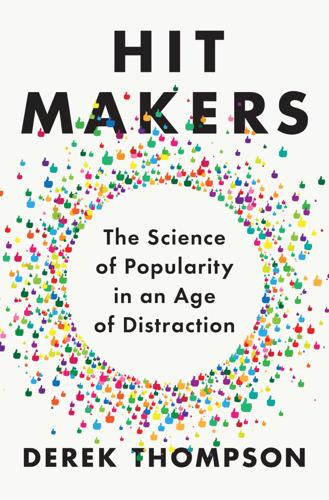
Hit Makers: The Science of Popularity in an Age of Distraction
by
Derek Thompson
Published 7 Feb 2017
Economists sometimes call this magnetizing effect “agglomeration,” and it’s why similar companies have a tendency to congregate in the same cities.10 When geographers at Uppsala University studied Sweden’s music industry, they said that it followed a model that economist Michael Porter calls “industrial clustering.” The same way that talented entrepreneurs go to San Francisco to be around people like them in the software industry, songwriters gravitate to Swedish power centers. “In Sweden, I met up with RedOne, Lady Gaga’s songwriter, and his whole crew,” Kotecha recalled. “Through another connection there, I met Simon Cowell and became involved with The X-Factor, which made me the lead coach and songwriter for One Direction.
…
Edgar, 157 horror movies, 112 Hoskins, Valerie, 198, 199 How to Win Friends and Influence People (Carnegie), 93–94 The Hum: Call and Response in African American Preaching (Crawford), 91 Hume, David, 28 humor, 144–49 Huron, David, 82–85, 83n, 84n ideas, spread of, 7–9 Iger, Bob, 299 iHeart Media, 35 imitation, 178–79 impressionists, 19–27, 312n22. See also Caillebotte, Gustave individualism, 137 industrial clustering, 75 industrialization, 137 Influence (Cialdini), 142, 144, 147 influencers, 223 information cascades, 170–71, 179, 183, 193, 195 information sharing, 211 In Praise of Scribes (Trithemius), 150 inside jokes, 210, 213, 215 Instagram, 8–9, 152, 159, 229 Internet and brand power, 41 and broadcast diffusion, 189–190 and distribution of content, 10, 301 and information cascades, 195 and news consumption, 265–66, 291, 292 and online-offline gap, 229 usage trends in, 288 Invisible Cities (Calvino), 1, 14–15 iPhones, 231–33 James, E.
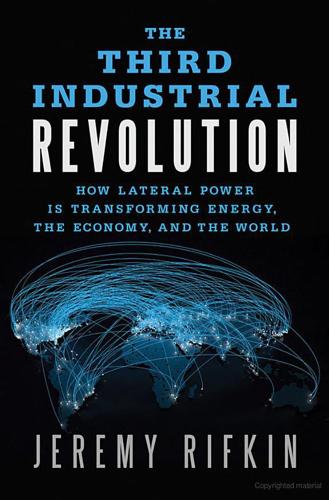
The Third Industrial Revolution: How Lateral Power Is Transforming Energy, the Economy, and the World
by
Jeremy Rifkin
Published 27 Sep 2011
Early Medieval and Byzantine Civilization: Constantine to Crusades. Encarta Online Encyclopedia. Retrieved from www.tulane.edu/~august/h303/byzantine.html. 11.ICF Consulting. (2005, July). Alamo Regional Industry Cluster Analysis. San Francisco: Author; Laitner, S., & Goldberg, M. (1996). Planning for Success: An Economic Development Guide for Small Communities. Washington, DC: American Public Power Association. 12.ICF Consulting. (2005, July). Alamo Regional Industry Cluster Analysis. San Francisco: Author. 13.Laitner, J. A., & Goldberg, M. (1996). Planning for Success: An Economic Development Guide for Small Communities. Washington, DC: American Public Power Association. 14.Ibid., p. 12. 15.Ibid. 16.Ibid., p. 13. 17.Clinton, B. (2010, September 19).
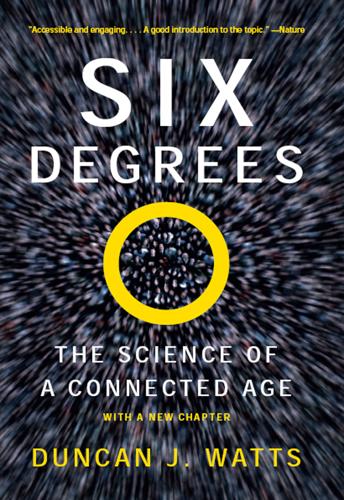
Six Degrees: The Science of a Connected Age
by
Duncan J. Watts
Published 1 Feb 2003
F. Pragmatic collaborations: Advancing knowledge while controlling opportunism. Industrial and Corporate Change, 9(3), 443–488 (2000). Sabel, C. F. Diversity, not specialization: The ties that bind the (new) industrial district. In Quadrio Curzio, A., and Fortis, M. (eds.), Complexity and Industrial Clusters: Dynamics and Models in Theory and Practice (Physica-Verlag, Heidelberg, 2002). Coping with Ambiguity Perhaps the clearest exposition of the conundrum faced by firms in ambiguous environments, and their need to be both adapted and adaptable, is that by David Stark in his work on heterarchies: Stark, D.
…
(Free Press, New York, 1995). Romer, P. Increasing returns and long-run growth. Journal of Political Economy, 94(5), 1002–1034 (1986). Sabel, C. F. Diversity, not specialization: The ties that bind the (new) industrial district. In Quadrio Curzio, A., and Fortis, M. (eds.), Complexity and Industrial Clusters Dynamics Models in Theory and Practice (Physica-Verlag, Heidelberg, 2002). Sachtjen, M. L., Carreras, B. A., and Lynch, V. E. Disturbances in a power transmission system. Physical Review E, 61(5), 4877–4882 (2000). Sah, R. K., and Stiglitz, J. E. The architecture of economic systems: Hierarchies and polyarchies.

Automation and the Future of Work
by
Aaron Benanav
Published 3 Nov 2020
These innovations are unlikely to lead to full automation in these sectors, but they could eliminate lots of jobs quickly and block access to the global economy for further low-wage countries, for example, in Africa.47 It is unclear whether these technological developments are ten or twenty years away, and they may not occur on any scale at all. Yet even without major advances in automation, “Industry 4.0” and “smart factory” technologies may increase the advantages of industrial clustering in the vicinity of related services, with the result that manufacturing jobs are more likely to be globally concentrated than dispersed.48 By overcoming impediments to mechanization in sectors that have hitherto acted as major labor absorbers, new technologies may serve as a secondary cause of the underdemand for labor.
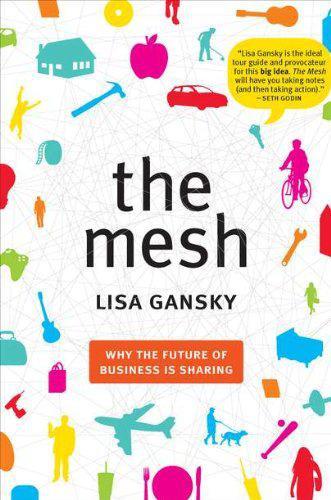
The Mesh: Why the Future of Business Is Sharing
by
Lisa Gansky
Published 14 Oct 2010
No wonder that, even in the United States, walkable cities and neighborhoods designed along the lines of European “café society” have become more desirable. Real estate listings feature “walk scores.” There’s even a noticeable reverse migration from American suburbs back to the cities. Urban areas with greater density are also fertile ground for clusters of related Mesh businesses to take root and grow. Michael Porter at Harvard studies industry clusters, such as shoes in Milan, publishing in New York, film in Mumbai, and technology in Silicon Valley. In the Harvard Business Review he writes, “Clusters are important, because they allow companies to be more productive and innovative than they could be in isolation. [Clusters] reduce the barriers to entry for new business creation relative to other locations.”

Company: A Short History of a Revolutionary Idea
by
John Micklethwait
and
Adrian Wooldridge
Published 4 Mar 2003
In 2000 alone, some $20 billion of venture capital was pumped into the region. By then, the Internet bubble was already bursting. Even allowing for that (and all the Valley’s other drawbacks, such as high house prices, terrible traffic, and unrelenting ugliness), the region still counted as the most dynamic industry cluster in the world. By 2001, Silicon Valley provided jobs for 1.35 million people, roughly three times the figure for 1975, its productivity and income levels were roughly double the national averages, and it collected one in twelve new patents in America.21 Silicon Valley changed companies in two ways.
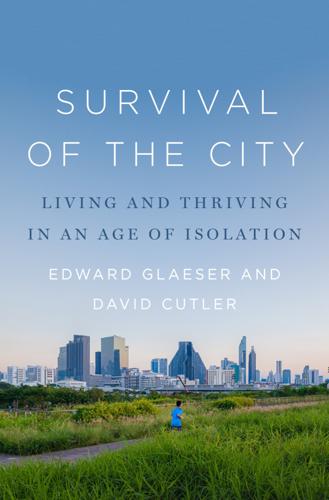
The Survival of the City: Human Flourishing in an Age of Isolation
by
Edward Glaeser
and
David Cutler
Published 14 Sep 2021
Between 1980 and 1990, nominal home values in Los Angeles County increased by 132 percent, or 35 percent after adjusting for inflation. Cities weren’t turning into ghost towns. But the most glaring fly in Toffler’s intellectual ointment was Silicon Valley. By the early 1980s, Silicon Valley’s set of geographically proximate, highly interactive companies had become the world’s leading example of industrial clustering. Countries everywhere were trying to create their own Silicon Alleys, Fens, Glens, Roundabouts, and Wadis. AnnaLee Saxenian’s Regional Advantage attributed Silicon Valley’s dominance to “the region’s dense social networks and open labor markets” that “encourage experimentation and entrepreneurship” through “informal communication and collaborative practices.”
…
Yet the steady employment of old workers and the sharp decline in new hires also suggests that companies could coast on years of in-person social capital to keep the old workers going, but feared beginning new relationships over Zoom. For over a century, economists largely agreed with the great English economist Alfred Marshall who wrote that in dense industrial clusters, “the mysteries of the trade become no mystery but are, as it were, in the air.” We have all learned things from nearby colleagues and from unplanned interactions at the lunch table and the watercooler. When people move from a lower-wage city to a higher-wage city, their wage rises over time.
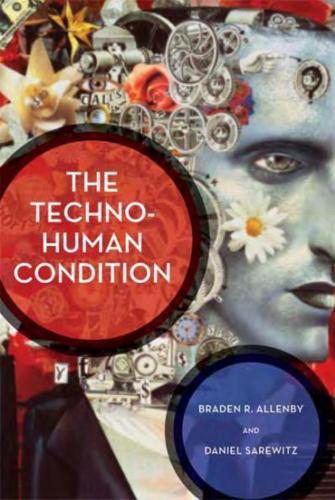
The Techno-Human Condition
by
Braden R. Allenby
and
Daniel R. Sarewitz
Published 15 Feb 2011
Though definitions and dates are somewhat loose, major waves stand out, powered by technological clusters: railroads and steam technology from about 1840 to 1890, steel, heavy engineering, and electricity from about 1890 to 1930, automobiles, petroleum, and aircraft from about 1930 to 1990, and information and communication technology, with its computerization of the economy, from about 1990 onward (although, as we will discuss, this may be just the tip of the iceberg). And with each wave of innovation came disturbing and unpredictable institutional, organizational, economic, cultural, and political changes. Specialized professional managerial systems and associated industrial efficiency techniques ("Taylorism") characterized the heavy-industry cluster; the automotive cluster could not have occurred without a petroleum industry and a mass consumer credit system; a far more networked, flexible industrial and financial structure began to evolve during the information cluster, and so on. The railroad story makes several general principles of technological evolution crystal clear.
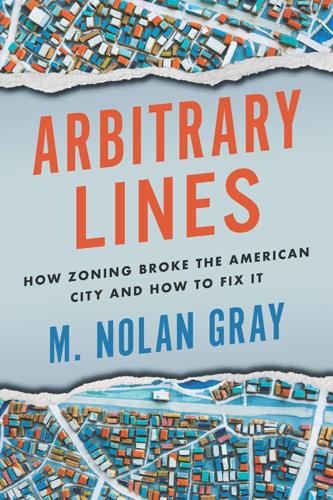
Arbitrary Lines: How Zoning Broke the American City and How to Fix It
by
M. Nolan Gray
Published 20 Jun 2022
As described by Avent, cities act as conduits of information: ideas about how to build better products or run better organizations are “in the air.” When a lot of people work near each other, they learn from one another, integrating the innovations of competitors and remixing existing ideas. This is especially true among firms in the same industry, which helps to explain why industries cluster so aggressively, be it automotive engineering in Detroit or music in Nashville. Residents of these cities enjoy access to an accumulated body of knowledge that makes them the best at what they do.10 For all the mythology surrounding the lone genius, most innovation emerges from small groups exchanging ideas.

The Global Auction: The Broken Promises of Education, Jobs, and Incomes
by
Phillip Brown
,
Hugh Lauder
and
David Ashton
Published 3 Nov 2010
Robert Hayes and William Abernathy, “Managing Our Way to Economic Decline,” Harvard Business Review (July/August 1980): 70. See also Robert Reich, The Next American Frontier (New York: Penguin, 1984); Bennett Harrison and Barry Bluestone, The Great U-Turn (New York: Basic Books, 1988); Lester Thurow, Head-to-Head (London: Nicholas Brealey, 1993); William Lazonick, “Industry Clusters versus Global Webs: Organizational Capabilities in the American Economy,” Industrial and Corporate Change, 2 (1993): 1–24. 8. Hayes and Abernathy, “Managing Our Way to Economic Decline,” 68. In Fordist plants, although there had been a clear division between those who did the company’s thinking and those who did the company’s producing, the former often had experience of the industry in which they had based their careers. 9.
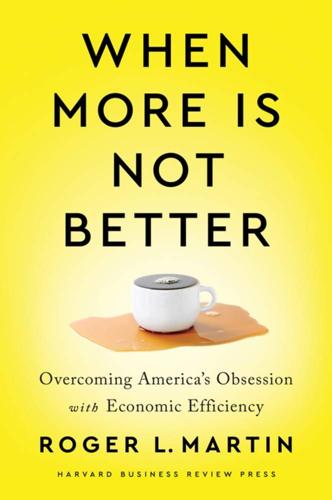
When More Is Not Better: Overcoming America's Obsession With Economic Efficiency
by
Roger L. Martin
Published 28 Sep 2020
Again, it must be emphasized that this dramatic divergence between the accelerating creativity-intensive workers and the stagnating routine-intensive workers has taken place in a mere twelve years, less than one-third of the working life of the workers across these four boxes. FIGURE 3–3 Employment income by occupational and industry clusters Source: Roger Martin et al., “Creativity, Clusters and the Competitive Advantage of Cities,” Competitiveness Review 25, no. 5 (2015): 482–496. *For all US employed wage earners, excluding those in the military and in farming, fishing, and forestry. Pareto Distribution in Companies Industry consolidation is increasingly common in the developed world.
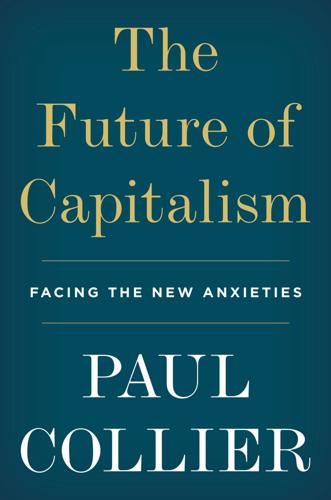
The Future of Capitalism: Facing the New Anxieties
by
Paul Collier
Published 4 Dec 2018
The productivity pay-offs from this easy connectivity were staggering, and many cities developed a cluster of firms in some particular industry that enabled them to be world-beating. My own home city of Sheffield established such a constellation of specialist steel manufacturers, and a correspondingly highly specialized workforce. By around 1980 the typical worker in these cities was astonishingly more productive than workers in those parts of the world that lacked industrial clusters. Since incomes tend to correspond to productivity, people were astonishingly more prosperous too. Starting around 1980, this situation was disrupted by two coincident but distinct processes: an explosion in knowledge, and globalization. The explosion in knowledge turbo-charged the old relationship between specialization and urbanization, leading to spectacular growth in the largest cities.
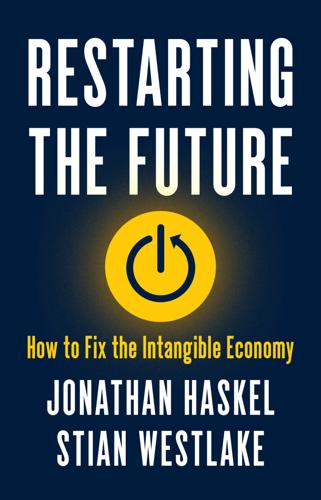
Restarting the Future: How to Fix the Intangible Economy
by
Jonathan Haskel
and
Stian Westlake
Published 4 Apr 2022
Thus, the intangibles-rich economy has an “O ring” feel to it: seemingly small differences between firms can be greatly magnified so that the gap between firms becomes very large.1 The Benefits of Clustering Economists have long known that people prosper when they come together to exchange ideas. When Alfred Marshall wrote about industrial clusters over a century ago, he was giving a name to a phenomenon that casual observers had known about since time immemorial. Today, the benefits of being located in dynamic cities (so-called agglomeration effects) have increased, and they are increasingly seen across industries. Consider the San Francisco Bay Area.
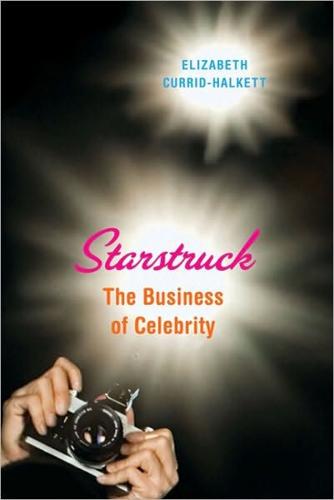
Starstruck: The Business of Celebrity
by
Currid
Published 9 Nov 2010
Within the economic geography literature, scholars have noted that particular social and economic phenomena occur when a concentration of like-minded labor pools, industries, and resources locate, whether Detroit’s auto industry or Silicon Valley’s technology sector. For an analysis of this phenomenon in industrial clustering, see the original treatise, Marshall’s Principles of Economics. For a more contemporary analysis of clusters, see Porter, “Clusters and the Economics of Competition.” The small-world network phenomenon in the fields of mathematics, physics, and sociology demonstrates similar patterns to those found in relative-celebrity social groups.
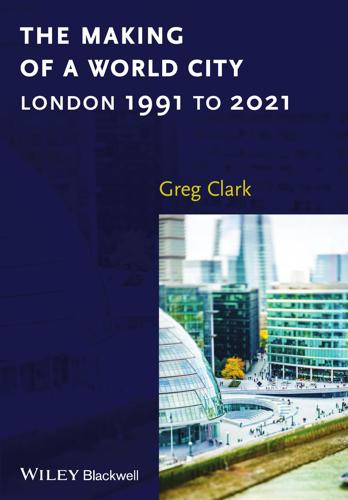
The Making of a World City: London 1991 to 2021
by
Greg Clark
Published 31 Dec 2014
In particular, it sought ways to transfer R&D taking place in London’s universities into business opportunities, and to provide tools for training providers so that they could help small businesses incorporate innovative practices into their daily operations. Its major proposals included a London Innovation Strategy Partnership, a citywide Knowledge Angels network and a London Venture Finance Network to coordinate SME funding in key industry clusters. The strategy helped draw attention to the need for stronger London policies for entrepreneurship and technology. The creation in 2000 of the GLA, an organisation unlike any that had previously existed in any region of the UK, boosted London’s spatial planning powers 54 The evolution of London, 1991 to 2015 and required the capital to produce economic and transport strategies.

The Connected Company
by
Dave Gray
and
Thomas Vander Wal
Published 2 Dec 2014
This combination of dense clusters with strong ties with brokers who maintain loose connections between them leads to many performance benefits, including collaboration, creativity, and shared patterns of work. High clustering in business alliances leads to innovation, which is one of the reasons you will find industries clustering together in geographic regions, like technology in Silicon Valley, publishing in New York, and clothing in Milan. The value that comes from these activities is known as social capital. Like every other form of capital, social capital represents stored value—in this case, relationship value—that can be translated into meaningful and tangible benefits.
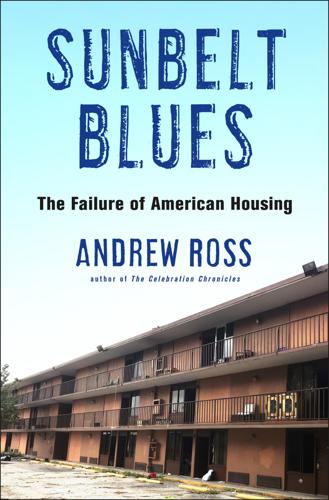
Sunbelt Blues: The Failure of American Housing
by
Andrew Ross
Published 25 Oct 2021
For NeoCity critics, at least, it looked as if commissioners were neglecting urgent needs in housing and service infrastructure to make a risky long-term bet on the future. Approval for the two Deseret developments was similarly tied to the promise of high-wage jobs. Officials had particular industry clusters in mind: life sciences and allied health services, information technology, chemical and plastics manufacturing, and more. According to Jeff Jones, this was the first time in Florida that a development plan was “tying jobs to land use.” Yet while the county is hoping for what he calls “real jobs, like industrial and white-collar,” he concedes it is already proving difficult to hold the developer accountable.37 The conceptual plan for Sunbridge, for instance, states that after the initial construction stage, phase two of the development can only break ground once 4,000 of these jobs are created, and phase three after a further 10,000 jobs.
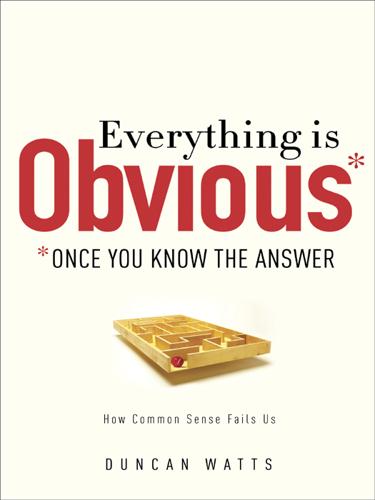
Everything Is Obvious: *Once You Know the Answer
by
Duncan J. Watts
Published 28 Mar 2011
See Watts (2003, Chapter 9) for an account of Toyota’s near catastrophe with “just in time” manufacturing, and also their remarkable recovery. See Nishiguchi and Beaudet (2000) for the original account. See Helper, MacDuffie, and Sabel (2000) for a discussion of how the principles of the Toyota production system have been adopted by American firms. 30. See Sabel (2007) for more details on what makes for successful industrial clusters, and Giuliani, Rabellotti, and van Dijk (2005) for a range of case studies. See Lerner (2009) for cautionary lessons in government attempts to stimulate innovation. 31. Of course in attempting to generalize local solutions, one must remain sensitive to the context in which they are used. Just because a particular hand-washing practice works in one hospital does not necessarily mean that it will work in another, where a different set of resources, constraints, problems, patients, and cultural attitudes may prevail.

The Globalization Paradox: Democracy and the Future of the World Economy
by
Dani Rodrik
Published 23 Dec 2010
Weak enforcement of intellectual protection laws enabled domestic producers to reverse engineer and imitate foreign technologies with little fear of prosecution. Cities and provinces were given substantial freedoms to fashion their own policies of stimulation and support, which led to the creation of industrial clusters in Shanghai, Shenzhen, Hangzhou, and elsewhere.24 Many of the Chinese companies created through government efforts failed. Accounts of industrial policy in China point to the low productivity and low-technology absorption of many state enterprises and to the lack of coordination (across national ministries as well as across different levels of government) that characterizes Chinese policies.25 But as in Japan a century earlier, state-led efforts played an important role in training workers and managers and in creating demonstration effects.
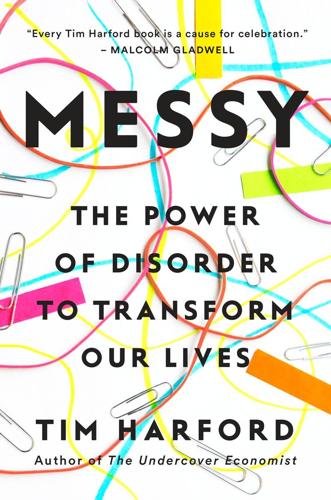
Messy: The Power of Disorder to Transform Our Lives
by
Tim Harford
Published 3 Oct 2016
Even more extraordinary is the tale of a woman hoping to pick up a friend from the local train station in Belgium who instead trustingly drove 800 miles to Zagreb, Croatia. * A roundabout is the European answer to a traffic circle, typically smaller and with no traffic lights. * Specialized cities had also been widely thought to be hubs of innovation. The great economist Alfred Marshall had described the advantages of industrial clusters. “When an industry has thus chosen a locality for itself, it is likely to stay there long: so great are the advantages which people following the same skilled trade get from near neighborhood to one another,” he wrote in Principles of Economics in 1890. “The mysteries of the trade become no mysteries; but are as it were in the air.”
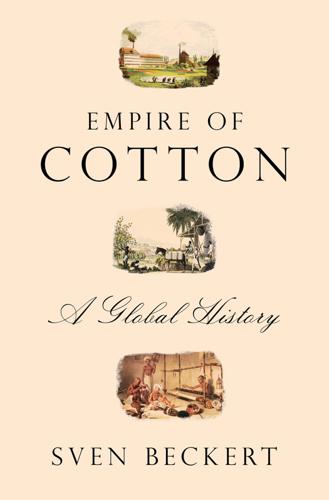
Empire of Cotton: A Global History
by
Sven Beckert
Published 2 Dec 2014
Trust as a core prerequisite for the emergence of markets, and thus the dependence of markets on relationships not generated in the market itself, is also emphasized by Hartmut Berghoff, “Vertrauen als Ökonomische Schlüsselvariable: Zur Theorie des Vertrauens und der Geschichte seiner Privatwirtschaflichen Produktion,” in Karl-Peter Ellerbrook and Clemens Wischermann, eds., Die Wirtschaftsgeschichte vor der Herausforderung durch die New Institutional Economics (Dortmund: Gesellschaft für Westfälische Wirtschaftsgeschichte, 2004), 58–71; M. C. Casson, “An Economic Approach to Regional Business Networks,” in John F. Wilson and Andrew Popp, eds., Industrial Clusters and Regional Business Networks in England, 1750–1970 (Aldershot, UK: Ashgate, 2003), 28; Olivier Pétré-Grenouilleau, “Les négoces Atlantique français: Anatomie d’ un capitalisme relationnel,” Dix-huitième Siècle 33 (2001): 38. See also Geoffrey Jones, “Multinational Trading Companies in History and Theory,” in Geoffrey Jones, ed., The Multinational Traders (London: Routledge, 1998), 5.
…
For India, see Official Indian Textile Statistics 2011–12, Ministry of Textiles, Government of India, Mumbai, accessed on June 5, 2013, http://www.txcindia.com/html/comp%20table%20pdf%202011–12/compsection1%2011–12.htm. For Pakistan see Muhammad Shahzad Iqbal et al., “Development of Textile Industrial Clusters in Pakistan,” Asian Social Science 6, no. 11 (2010): 132, Table 4.2, “Share of Textiles in Employment.” On China see Robert P. Antoshak, “Inefficiency and Atrophy in China’s Spinning Sector Provide Opportunities of Others,” Cotton: Review of World Situation 66 (November–December 2012), 14–17. 5.
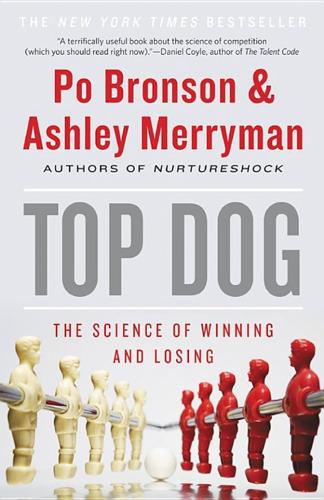
Top Dog: The Science of Winning and Losing
by
Po Bronson
and
Ashley Merryman
Published 19 Feb 2013
Staw & Roderick Moreland Kramer (Eds.), Research In Organizational Behavior: An Annual Series Of Analytical Essays & Critical Reviews, vol. 26, pp. 351–371, Oxford: Elsevier (2005) Barnett, William P., & Olav Sorenson, “The Red Queen in Organizational Development,” Industrial & Corporate Change, vol. 11(2), pp. 289–325 (2002) Belussi, Fiorenza, “The Generation of Contextual Knowledge through Communication Processes: The Case of the Packaging Machinery Industry in the Bologna District,” In: Fiorenza Belussi, Giorgio Gottardi, & Enzo Rullani (Eds.), The Technological Evolution of Industrial Districts (Economics of Science, Technology & Innovation), ch. 15, pp. 341–366, Norwell, MA: Kluwer Academic Press (2003) Belussi, Fiorenza, Alessia Sammarra, & Silvia Rita Sedita, “Entrepreneurship and Innovation—Organization Systems and Regions,” Paper Presentation for 25th Celebration Conference, DRUID, Copenhagen (2005) Boari, Cristina, “Industrial Clusters, Focal Firms, and Economic Dynamism: A Perspective from Italy,” Paper No. 37186, Washington, DC: World Bank Institute (2001) Boari, Cristina, Guido Fioretti, & Vincenza Odorici, “Rivalry and Learning among Clustered and Isolated Firms,” In: Edoardo Mollona (Ed.), Computational Analysis of Firms’ Organization and Strategic Behaviour, ch. 8, pp. 171–192, New York: Routledge (2010) Boari, Cristina, & Andrea Lipparini, “Networks within Industrial Districts: Organising Knowledge Creation and Transfer by Means of Moderate Hierarchies,” Journal of Management & Governance, vol. 3(4), pp. 339–360 (1999) Boari, Cristina, Vincenza Odoricia, & Marco Zamarian, “Clusters and Rivalry: Does Localization Really Matter?”

Markets, State, and People: Economics for Public Policy
by
Diane Coyle
Published 14 Jan 2020
The 1980s brought intense criticism of Japan’s policies from the US, however, due to the large Japanese trade surplus. Subsequently, the 1991 collapse of a massive asset bubble was followed by a long period of slow or no growth. Industrial policy shifted in this later period to emphasizing “structural” economic reforms to liberalize finance and employment, and a focus on supporting industrial clusters to enable regional growth. Yet although the content of the policies has changed significantly over time in response to changes in the economy, successive Japanese governments have shared a commitment to having an industrial policy. Per capita GDP, United States vs. Japan. Source: Maddison Project Database.

Age of Discovery: Navigating the Risks and Rewards of Our New Renaissance
by
Ian Goldin
and
Chris Kutarna
Published 23 May 2016
They will add 1.3 billion inhabitants through 2030—compared with an increase of just 100 million dwellers in existing big cities.47 We know these new crossroads only vaguely, if at all. They include some 150 regional hubs of 5–10 million inhabitants like China’s Changsha, Brazil’s Joinville and Mexico’s Veracruz; a few hundred midsize growth cities of 1 to 5 million, like India’s Ahmedabad and Russia’s Sochi—often built around local natural resources or industrial clusters; and thousands of smaller boomtowns few of us could find on a map, such as Hengshan, Leibo, Kuchaman City, Konch, Caxias, Timon, Escobedo and Abasolo. China leads the urbanization story. Between 1982 and 1986, the dismantling of state-planned agriculture released surplus workers from their rural posts.
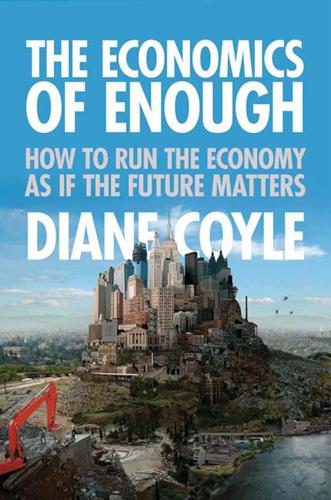
The Economics of Enough: How to Run the Economy as if the Future Matters
by
Diane Coyle
Published 21 Feb 2011
In other contexts, urban gangs or terror cells have strong social capital internal to their membership, which translates into weak social capital for the wider social entities in which they live, whether their estate or their nation. Strong social capital will improve the way economic markets operate. One example is the way specialized industrial clusters develop in a particular place, where access to market and the availability of employees to hire are part of the explanation, but so are social factors such as the way people in different firms might exchange know-how about their areas of expertise, or move from one job to another via word of mouth.
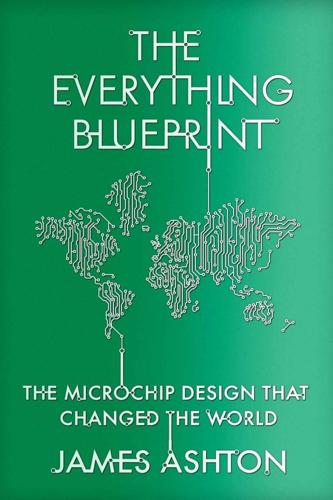
The Everything Blueprint: The Microchip Design That Changed the World
by
James Ashton
Published 11 May 2023
In fact, IBM’s support went a step further for its chip supplier. In late 1982, it paid an above-market $250m to take a 12 per cent stake in Intel, providing vital cash to see it through a period of weak demand for memory chips and until sales to PC makers took off. The stake rose to 20 per cent but was sold down five years later. The industry clustered around what became the x86 chip family, so it became a common computing standard and its speed, capacity and the relationship between price and performance made exponential progress. It happened not just because Intel championed and set about improving the x86 line – it was because hundreds of other companies vied to do the same thing.

The Long Boom: A Vision for the Coming Age of Prosperity
by
Peter Schwartz
,
Peter Leyden
and
Joel Hyatt
Published 18 Oct 2000
Each African cluster would be known globally for its particular offerings of textiles or clothing. And with the new decentralized but interconnected technologies, they could integrate into the mainstream global economy quite quickly. These clusters would not necessarily be limited to apparel industries. Clusters could develop in any area in which a region excels. Africa has always been valued for its natural resources. In fact, the attraction of those resources was behind the colonial occupations of 142 Ike Lowq BOOM the nineteenth and the first half of the twentieth centuries. By the time Africans controlled their own countries, many of the resources were commodities subject to the vagaries of world markets, with very thin profit margins.
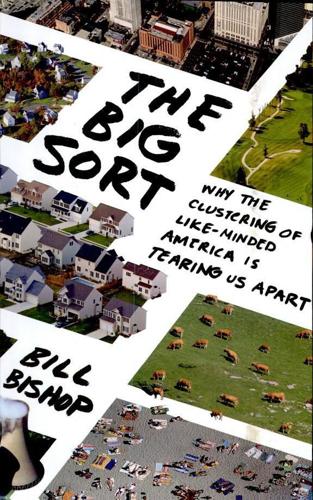
The Big Sort: Why the Clustering of Like-Minded America Is Tearing Us Apart
by
Bill Bishop
and
Robert G. Cushing
Published 6 May 2008
Rather, they came to Portland because this was where they wanted to be, where they could live among their own kind. The English economist Alfred Marshall examined the agglomeration of industries in nineteenth-century England—textile manufacturers in Manchester and cutlery makers in Sheffield—and observed the economic advantages when industry clustered. Textile manufacturers in Manchester shared knowledge about the latest weaving techniques and markets. Skilled spinners were ready for hire because the business of mills and textiles was part of Manchester. "Great are the advantages which people following the same skilled trade get from near neighborhood to one another," Marshall wrote.
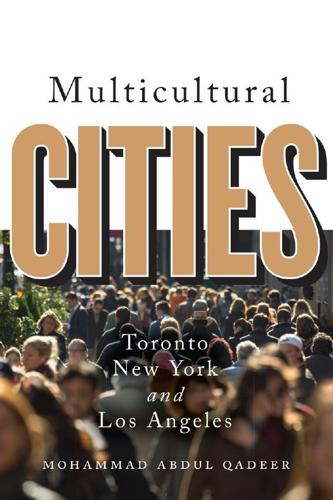
Multicultural Cities: Toronto, New York, and Los Angeles
by
Mohammed Abdul Qadeer
Published 10 Mar 2016
Los Angeles County’s economy has lesser concentration in services (63.0% of employment in 2009) than New York, but manufacturing had a higher share (11.3% in 2009), inherited from defence industries established during the Second World War. Table 5.2 shows that trade (17.6%), education and health, services (16.1%), and entertainment (Hollywood) and food (11.4%) were the leading industries in 2009. Los Angeles has an industrial cluster of information, defence, biomedical, and environmental technologies, which is an emerging driver of its economy and a platform for international trade. It has the biggest American port and is the connecting point for the Pacific trade. This is the framework of opportunities within which ethnic entrepreneurship and economic participation operate.

Democracy and Prosperity: Reinventing Capitalism Through a Turbulent Century
by
Torben Iversen
and
David Soskice
Published 5 Feb 2019
Anglo-Saxon readers may raise eyebrows at the widespread nationalizations of leading manufacturing companies by Mitterrand when he became president in 1981 in a socialist-communist alliance. While ambiguity doubtless colors many of Mitterrand’s strategic moves, this major maneuver conformed to the Gaullist idea of the grande politique industrielle of creating great industrial clusters, including the supply chains (filières) which had come apart during the Giscard-Barre period of liberal economic policy in the turbulent second half of the 1970s; nor was it a million miles from the idea of the Japanese vertical Keiretsu. It is true that it did not represent a direct policy of radical liberalization, but it was exactly intended to arm national champions with the competitiveness and innovative capacities needed to succeed in increasingly competitive world markets.

Shadow Libraries: Access to Knowledge in Global Higher Education
by
Joe Karaganis
Published 3 May 2018
“Academic Publishing in South Africa.” In The Politics of Publishing in South Africa, ed. Nicholas Evans and Monica Seeber, 163–188. Scottsville: University of KwaZulu-Natal Press. Gray, Eve, and Monica Seeber. 2004. PICC Report on Intellectual Property Rights in the Print Industry Sector. Cape Town: Print Industries Cluster Council. http://www.publishsa.co.za/downloads/intellectual_property_report.pdf. Gray, Eve, Karen Bruns, and Andrew Rens. 2010. “Publishing and Alternative Licensing Models in Africa.” Cape Town: Association for Creative Research and Development. https://idl-bnc.idrc.ca/dspace/bitstream/10625/45649/1/132110.pdf.

Culture and Prosperity: The Truth About Markets - Why Some Nations Are Rich but Most Remain Poor
by
John Kay
Published 24 May 2004
For an elaboration of the relationship between competitive advantage and firm capabilities, see Kay (1993). 13. This example was used in Ricardo's Principles ofPolitical Economy (1817). 14. Own estimates from world trade statistics. 15. Own estimates from Swiss trade statistics. 16. Porter (1990) has repopularized the emphasis on industrial "cluster" noted by Alfred Marshall a century before. Chapter 8: Assignment ••••••••••••••••••••••••••••••••••••• 1. This account of the history of the Portrait ofDr. Gachet is based heavily on Saltzman (1998). 2. Gachet ( 1994). 3. Van Gogh's brother, Theo, was an art dealer who died soon after the painter, and Thea's sister effectively commercialized van Gogh's work: Gachet was first sold in 1897 for 225 francs.
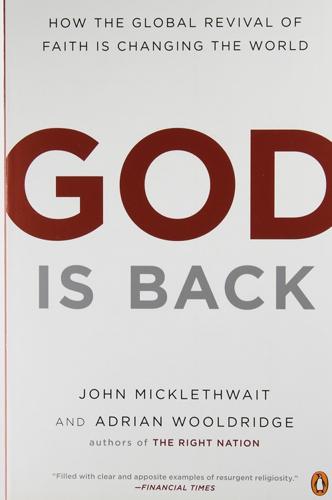
God Is Back: How the Global Revival of Faith Is Changing the World
by
John Micklethwait
and
Adrian Wooldridge
Published 31 Mar 2009
(The Koran and the Bible after all have common roots and common themes.) This assault is at its most striking in the case of pornography. America has applied the same commercial genius to porn that it has to mainstream films and computers. “Silicone Valley” in LA’s San Fernando Valley is one of California’s great industrial clusters—home to fifty of the world’s top porn companies and sugar daddy to twenty thousand porn stars—and that cluster is increasingly looking to the world market to boost its profits. Porn companies have global distribution chains, not least the Western hotel chains that make a habit of providing “adult entertainment” along with CNN.

Super Continent: The Logic of Eurasian Integration
by
Kent E. Calder
Published 28 Apr 2019
China and Malaysia are also working to systematically coordinate valuechain development, through their “two countries, twin parks” initiative. This program, whose foundations were laid in 2012, involves two jointly built industrial parks in Qinzhou in Guangxi province and Kuantan in Malaysia. Both are port cities with access to the South China Sea. In the Qinzhou Industrial Park, six industrial clusters are being built up for coordinated development, including healthcare, marine industries, and food processing. One special niche is bird-nest and halal food processing, building on Malaysian traditional industries, for product distribution in China and neighboring countries.35 While Chinese infrastructure projects in Malaysia have come under review following the election of China critic Mahathir Mohamad, joint commercial projects in China like the Qinzhou industrial park are unlikely to be affected.36 Deepening China–Southeast Asia Transportation Networks China is separated from its immediate neighbors in continental Southeast Asia (Vietnam, Laos, Myanmar) by mountainous terrain and at times by impenetrable jungles as well.
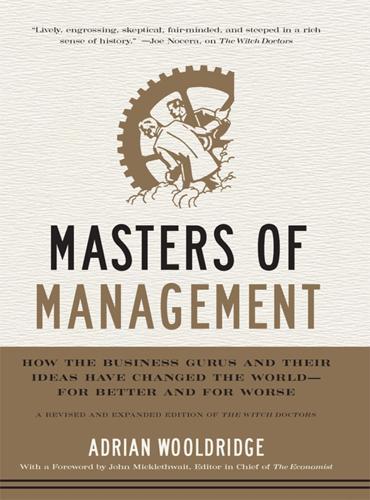
Masters of Management: How the Business Gurus and Their Ideas Have Changed the World—for Better and for Worse
by
Adrian Wooldridge
Published 29 Nov 2011
He first got interested in the subject when Ronald Reagan, confronted by mounting demands for an “industrial policy” to deal with America’s supposed economic decline, asked him to sit on a presidential Commission on Industrial Competitiveness, and he was struck by the huge role that nationstates and national differences play in determining the success of the companies that he had spent his life studying.3 The result of this conversion was a huge book, The Competitive Advantage of Nations (1990). Over eight hundred pages long, lavishly illustrated with charts, diagrams, and maps of successful industrial clusters, littered with details about British biscuit companies and Italian shoe-makers, supported by hundreds of footnotes, the book can be read on three levels: as a general inquiry into what makes national economies successful; a detailed study of eight of the most important economies in the world, South Korea, Italy, Sweden, Japan, Switzerland, Germany, Britain, and the United States; and a series of prescriptions about what governments should do to improve their country’s competitiveness.

Make Your Own Job: How the Entrepreneurial Work Ethic Exhausted America
by
Erik Baker
Published 13 Jan 2025
At one ARD annual meeting, Olsen gave a presentation that urged leaders of technology companies to instill an entrepreneurial, rather than narrowly professional, mindset in their engineering employees—to teach them to “get their satisfaction” from deriving innovations that “really influence the world,” not just those which “they can brag about to their counterparts.”63 It was precisely this orientation toward entrepreneurial world-changing that seemed to distinguish the engineers of the Boston-area technology industry, clustered around what Business Week famously christened the “Magic Semicircle” of Route 128.64 Doriot’s proteges were not the only denizens of the Magic Semicircle. Perhaps the scene’s greatest success story was Polaroid, founded in 1937 in Cambridge by the Harvard dropout Edwin Land, which became a major commercial force after introducing the instant camera in 1947.65 Like Ken Olsen, Land was an engineer and an executive who also styled himself as a business philosopher—and an entrepreneurial, democratic leader in the sense described by the postwar era’s most popular treatises on management theory.
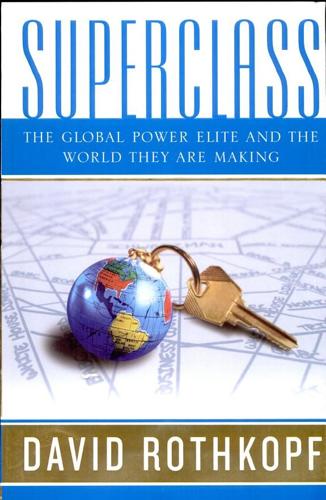
Superclass: The Global Power Elite and the World They Are Making
by
David Rothkopf
Published 18 Mar 2008
Indeed, one senior U.S. official situates Khan’s destabilizing role in the twenty-first century as “up there” with Hitler and Stalin in the twentieth. Even without a military title or CEO status, men like Khan have the capability to shape world events to an extraordinary and terrifying extent. International terrorists constitute a similar, critical component of the shadow class of the military-industrial cluster. They are much more directly involved with the use of force and violence than their counterparts in the arms trade, and the effects of their actions can be no less momentous. In addition to notorious characters like Osama bin Laden, there are others with (purportedly) similar sway in their respective networks: Terrorist leaders Ayman Al-Zawahiri (Al Qaeda), Ramadan Abdullah Mohammad Shallah (Palestinian Islamic Jihad), and Sayyed Hassan Nasrallah (Hezbollah) top a long list of individuals whom authorities consider masterminds.

Good Economics for Hard Times: Better Answers to Our Biggest Problems
by
Abhijit V. Banerjee
and
Esther Duflo
Published 12 Nov 2019
China Daily quoted Huang Guoliang, director of the administration’s quality supervision department: “Current law generally imposes administrative penalties on violators of product quality law, which are too lenient… A system under which violators of the law would suffer devastating consequences would act as a deterrent [italics added].”38 The best-case scenario in this world of fragile and interconnected reputations is often an “industrial cluster,” a concentration of firms in the same industry in one location, all benefitting from the reputation associated with the cluster. There have been knitwear factories in Tirupur in India since 1925, and throughout the 1960s and 1970s, the industry grew, producing mainly the white cotton tank tops Indian men wear under their shirts.

Who Stole the American Dream?
by
Hedrick Smith
Published 10 Sep 2012
With a competitive advantage from these illegal labor practices, confirmed by an outside audit inspection, Foxcomm, Apple’s biggest supplier in China of iPads and iPhones could undercut and beat out American rivals. “The speed and flexibility is breathtaking,” said one Apple executive. “There’s no American plant that can match that.” Many other American firms found the pull of China’s low-cost, moderately skilled workforce and its state-supported industrial clusters irresistible. With overseas production based in China shipping goods home to American consumers, U.S. multinationals were contributing to America’s record $273 billion trade deficit with China, triple the level a decade earlier. From 2001 to 2010, right after Washington approved free trade with China, the red ink was overwhelming.
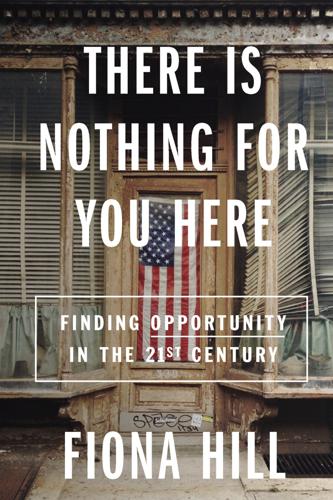
There Is Nothing for You Here: Finding Opportunity in the Twenty-First Century
by
Fiona Hill
Published 4 Oct 2021
I have friends and family in Bishop Auckland and the North East who repeatedly lost good jobs after a few years and had to start again under these circumstances. The problem is that tax breaks and subsidies as well as stand-alone economic development corporations don’t work particularly well in small towns without existing industrial clusters. Nor do they work in places with few large private businesses to provide matching dollars for external funds and for outmoded infrastructure. In the 1990s and early 2000s, Bishop Auckland’s immediate district in County Durham attempted to create a local development agency along the same lines as those in Detroit and Bethlehem, pulling together a group of small towns and villages under the rubric “Wear Valley.”

The Third Pillar: How Markets and the State Leave the Community Behind
by
Raghuram Rajan
Published 26 Feb 2019
These establishments have dominated the local community, providing the incomes that keep the local hairdressers, laundries, and shops in business. If unable to keep up with competition from imports, the establishments close down local operations, and may move machinery to a country where labor is cheaper. Since manufacturers in an industry cluster together, they are likely to decide to lay off workers or close down at similar times, compounding the magnitude and impact of the job losses. Of the 1,250 workers represented by the steel workers union in Granite City, only 375 were working at the end of 2016.19 As described by Amy Goldstein in her book Janesville, which follows the Janesville community after General Motors closed a large plant there, the effects on the community can be devastating.

Digital Empires: The Global Battle to Regulate Technology
by
Anu Bradford
Published 25 Sep 2023
(Aug. 18, 2021), https://www.wsj.com/articles/tencent-looks-abroad-as-beijing-tightens-the-screws-at-home-11629286711. 43.Zeyi Yang, How Chinese Tech Companies Took Over the World in 2021, Protocol (Dec. 29, 2021), https://www.protocol.com/china/china-world-2021-review. 44.Huawei’s Revenue from 2012 to 2021, by Geographical Region, Statista (July 27, 2022), https://www.statista.com/statistics/368509/revenue-of-huawei-by-region/. 45.Huawei Investment & Holding Co., Ltd., 2021 Annual Report 21 (2021), https://www-file.huawei.com/minisite/media/annual_report/annual_report_2021_en.pdf?version=0401. 46.Yang, supra note 43. 47.Geoffrey T. Dancik, The Creation of an Information, Communication, and Technology (ICT) Industry Cluster: Dubai’s Internet City, Univ. of Mich. (Dec. 16, 2005), http://websites.umich.edu/~econdev/gd_dubai/index.html. 48.Sam Bridge, Dubai Is Middle East’s Silicon Valley, Says Ruler, Arabian Bus., (Sep. 11, 2019), https://www.arabianbusiness.com/industries/technology/427823-dubai-is-middle-easts-silicon-valley-says-ruler. 49.Conor Gaffey, Silicon Lagoon: Africa’s Tech Revolution Heads West, Newsweek Mag.
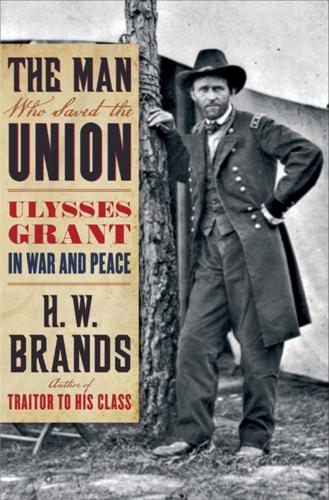
The Man Who Saved the Union: Ulysses Grant in War and Peace
by
H. W. Brands
Published 1 Oct 2012
And it avoided provoking the North beyond the capacity of Lincoln and his administration to endure without declaring war on London. The balanced policy also let British merchants and manufacturers do business with both sides in the American conflict. The South, in particular, coveted access to British industry, in order to acquire the weapons without which the Confederacy would quickly have collapsed. American industry clustered in the North, which supplied its own arms needs; the South looked to Britain. British arms makers and especially ship builders were pleased to accommodate. Some sleight of hand was required, as British law forbade the construction of foreign warships; the solution was for the British yards to build commercial vessels subsequently convertible to Confederate naval use.
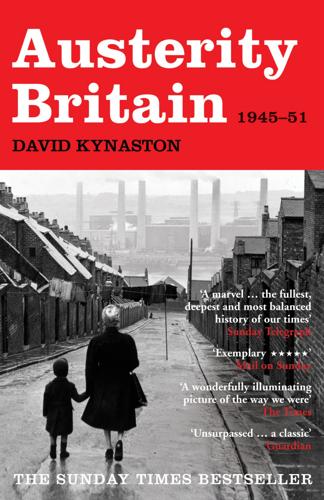
Austerity Britain: 1945-51
by
David Kynaston
Published 12 May 2008
A report on the British motor industry did concede that it would not be a seller’s market for ever and identified Germany in particular as a potential future competitor of ‘permanent importance’, but that competition would not come from the Volkswagen, which the report reckoned ‘by British standards’ to be ‘uncomfortable and noisy’. Despite increasingly persistent, disobliging complaints from abroad that British cars were becoming a byword for unreliability, it would take a lot to shake the industry’s complacent assumption that British was still best.11 It was an industry clustered in five main places. Each had significantly different characteristics, but in all of them the conveyor-belt assembly line – ‘the track’ – was the relentless, remorseless, unforgiving nerve centre of operations. Dagenham was the British home of Ford – a Detroit in miniature since the early 1930s.
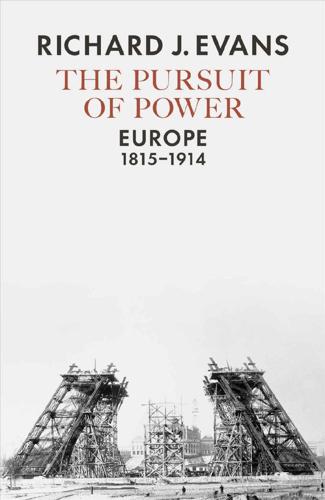
The Pursuit of Power: Europe, 1815-1914
by
Richard J. Evans
Published 31 Aug 2016
Patchy and regionally localized industrialization also characterized the Russian economy before 1914. Yuzovka, in the Donbass region of Ukraine, was one, still relatively small industrial area; in the 1890s the iron-ore fields of Krivoy Rog came into large-scale operation, with large metallurgical plants being founded at Ekaterinoslav, on the Dnieper, and industry clustered around the great cities of Moscow and St Petersburg. Industrial production in Russia doubled between 1860 and 1880, again to 1891, and again from 1892 to 1900. Yet this was still a slow pace of growth. Sergei Witte, Finance Minister from 1892 to 1903, previously in charge of Russia’s railways, saw that state intervention was needed to speed up the process of economic growth.